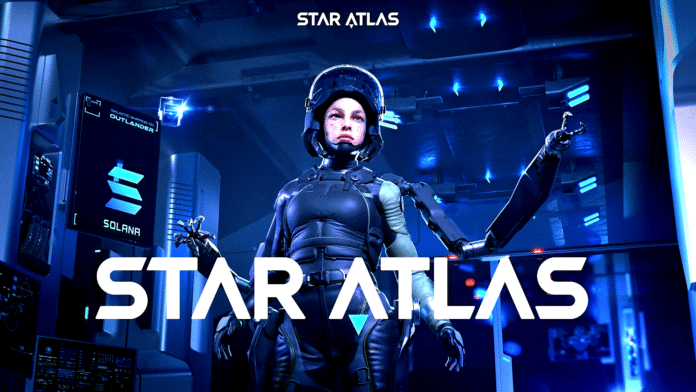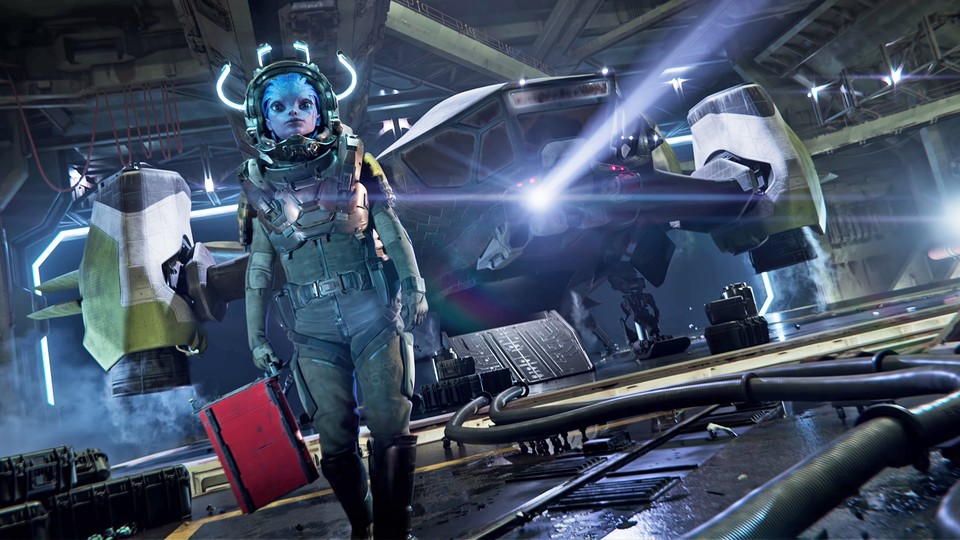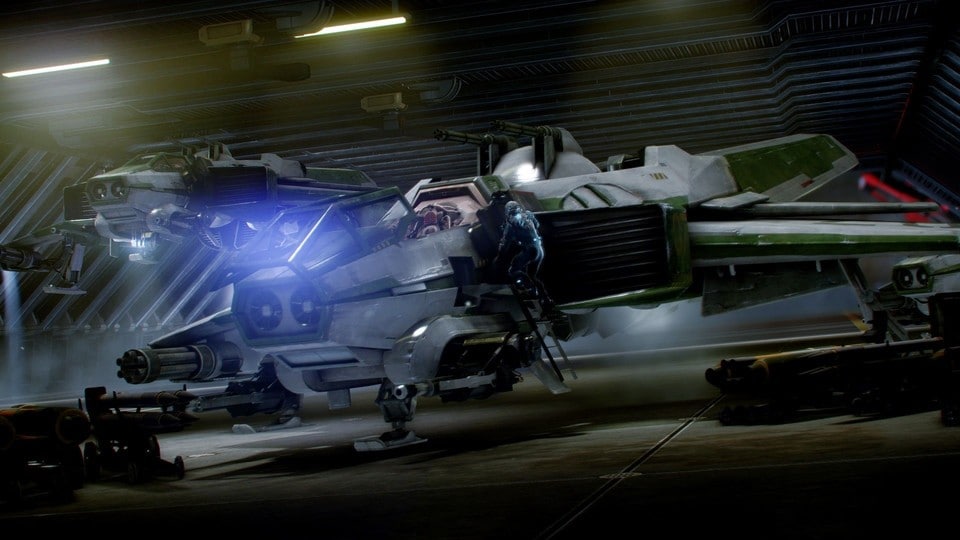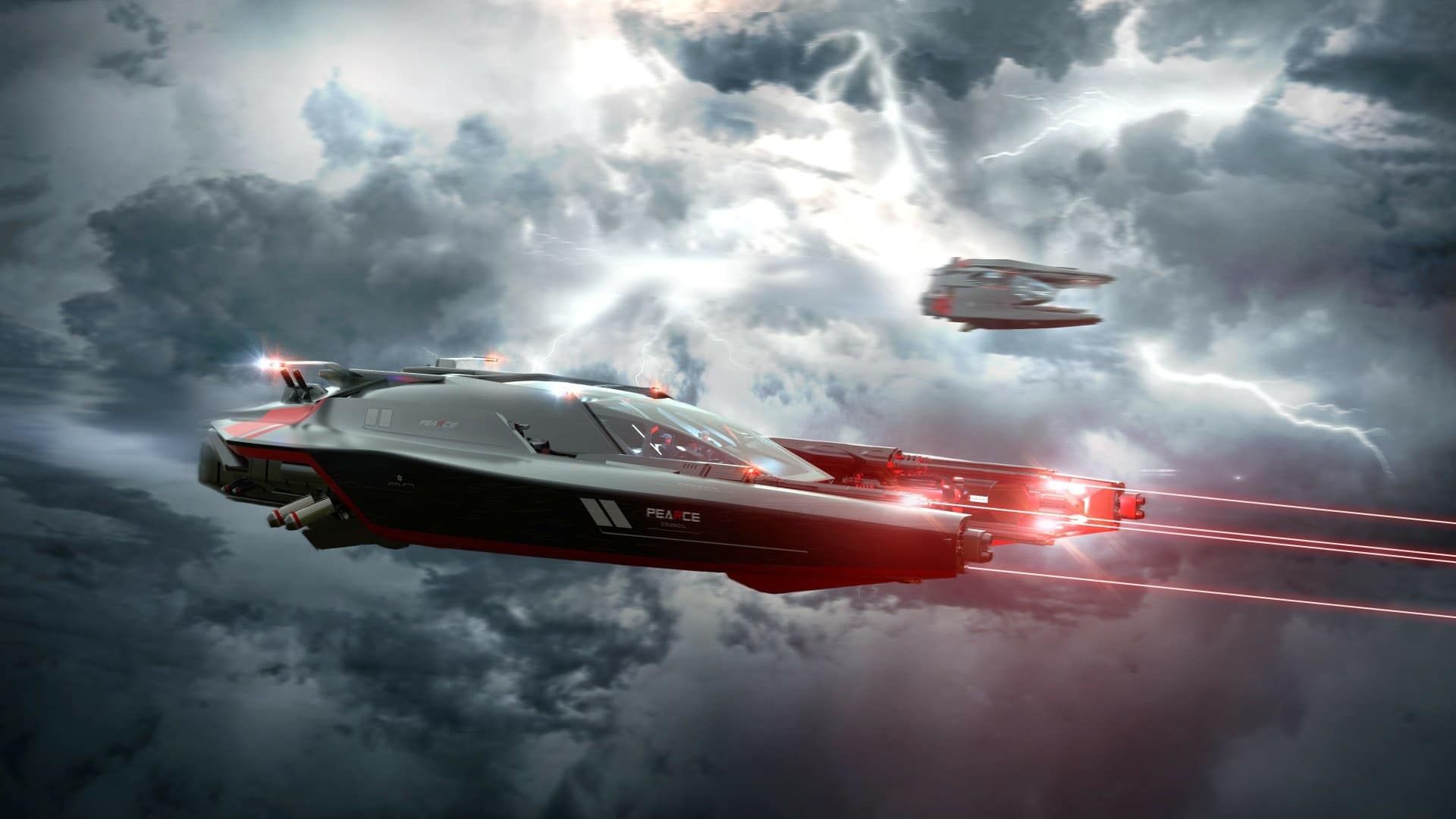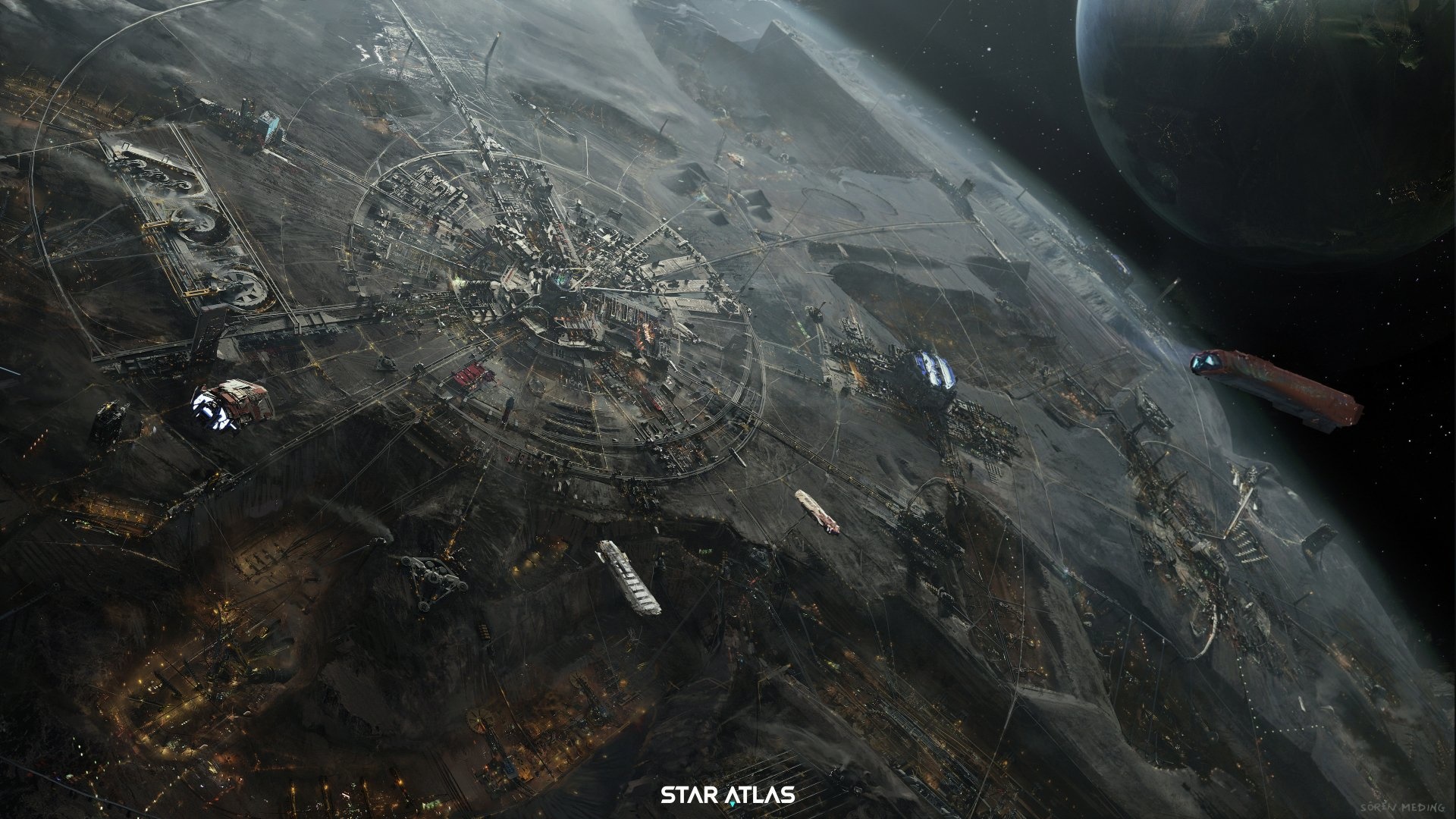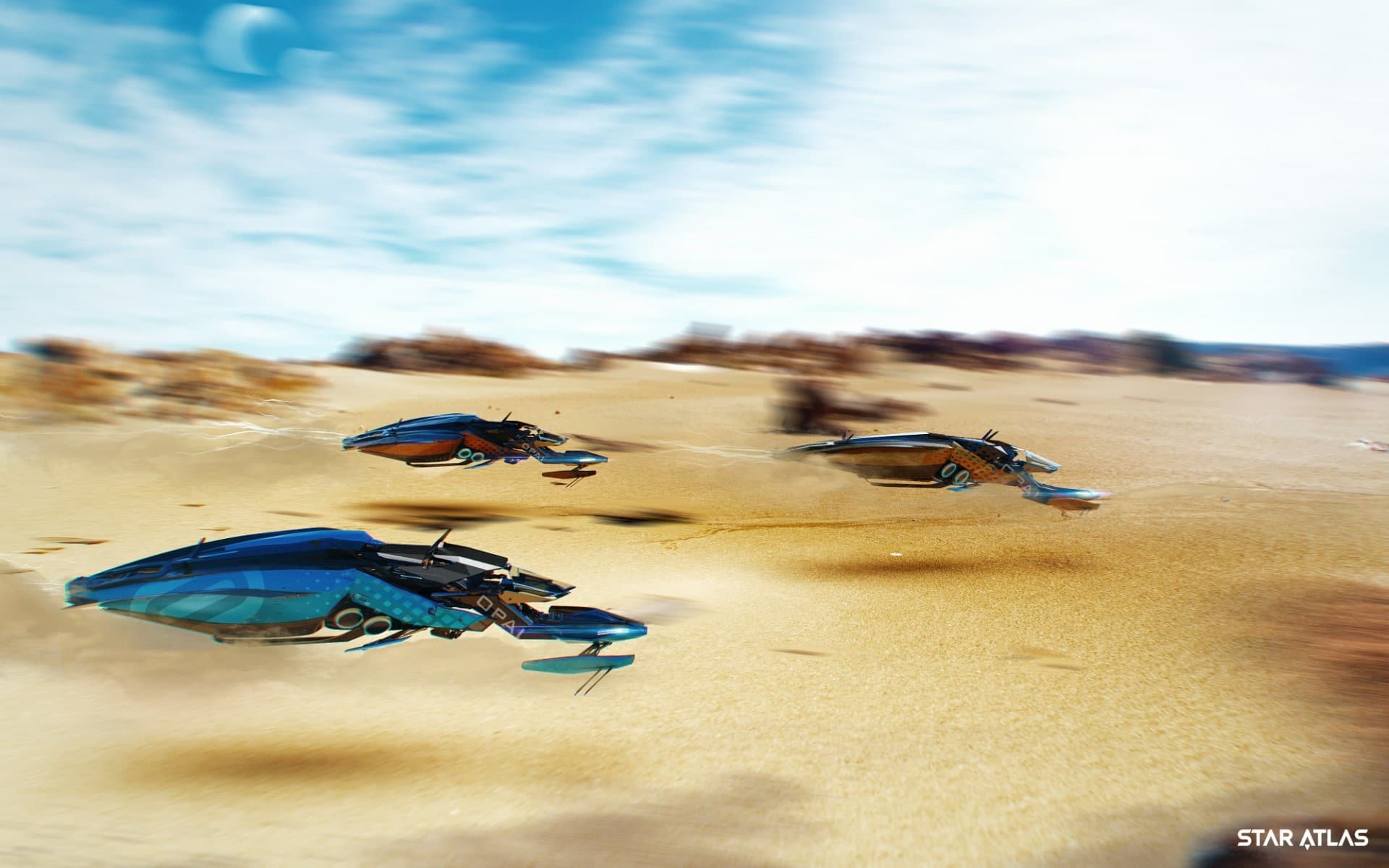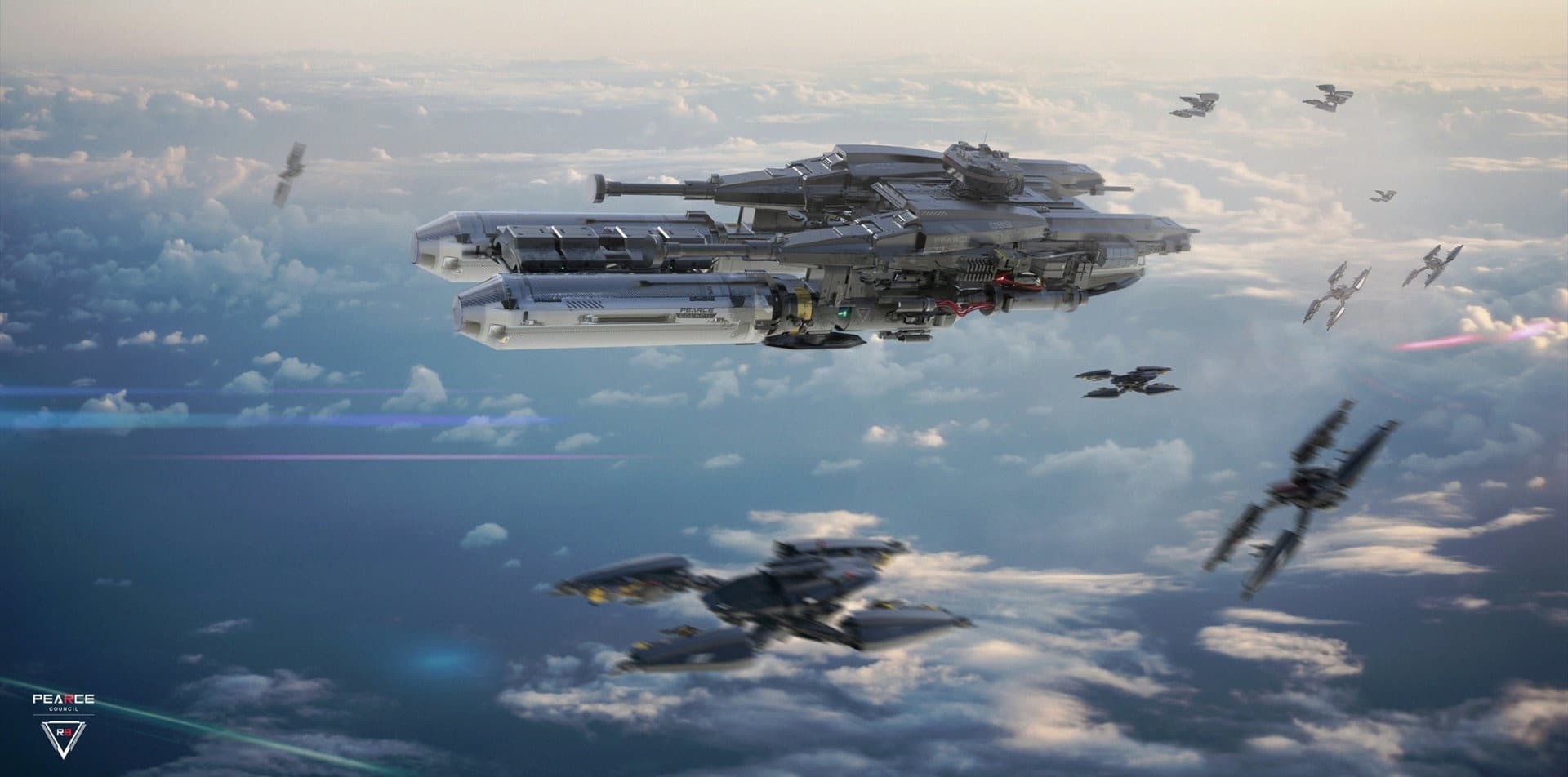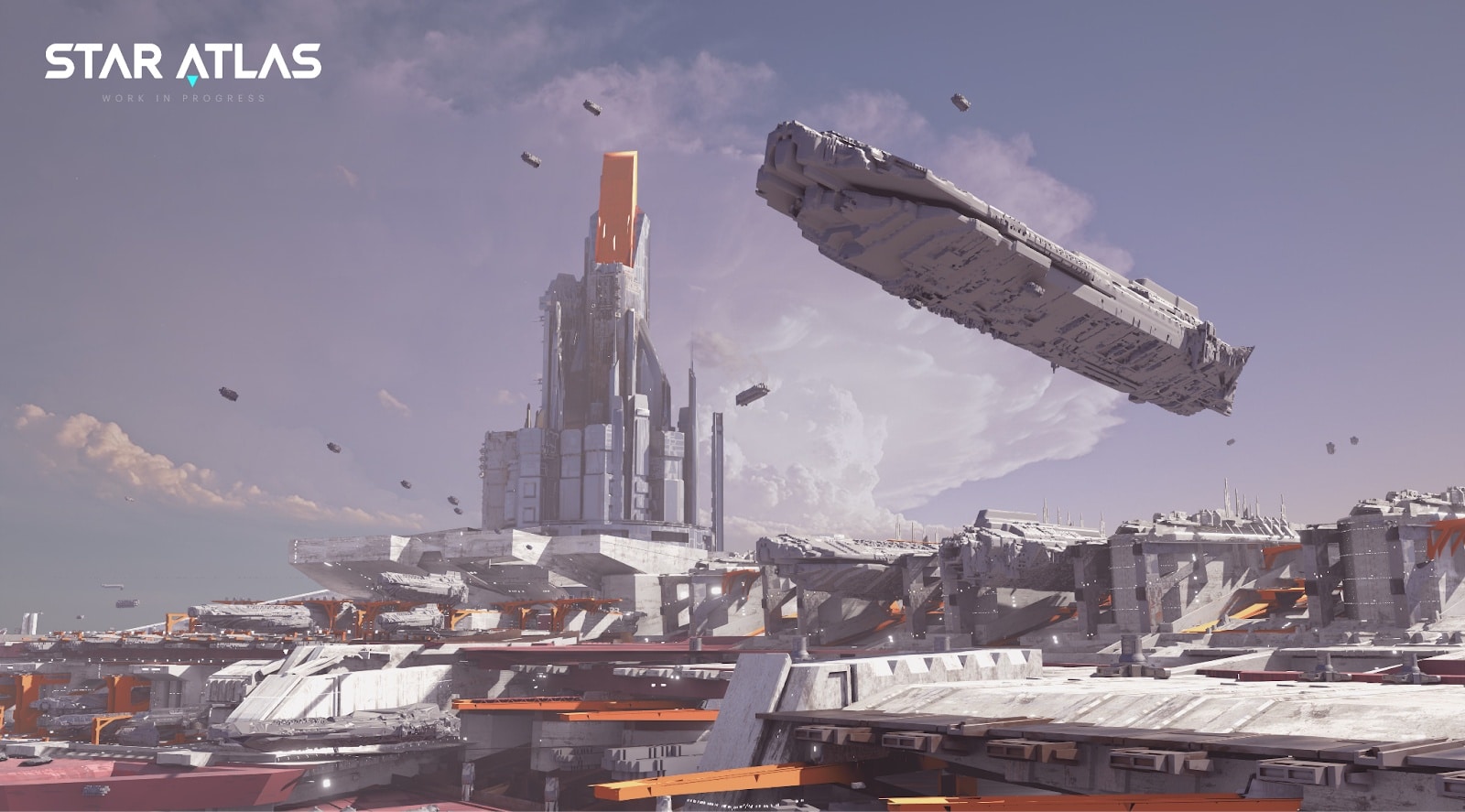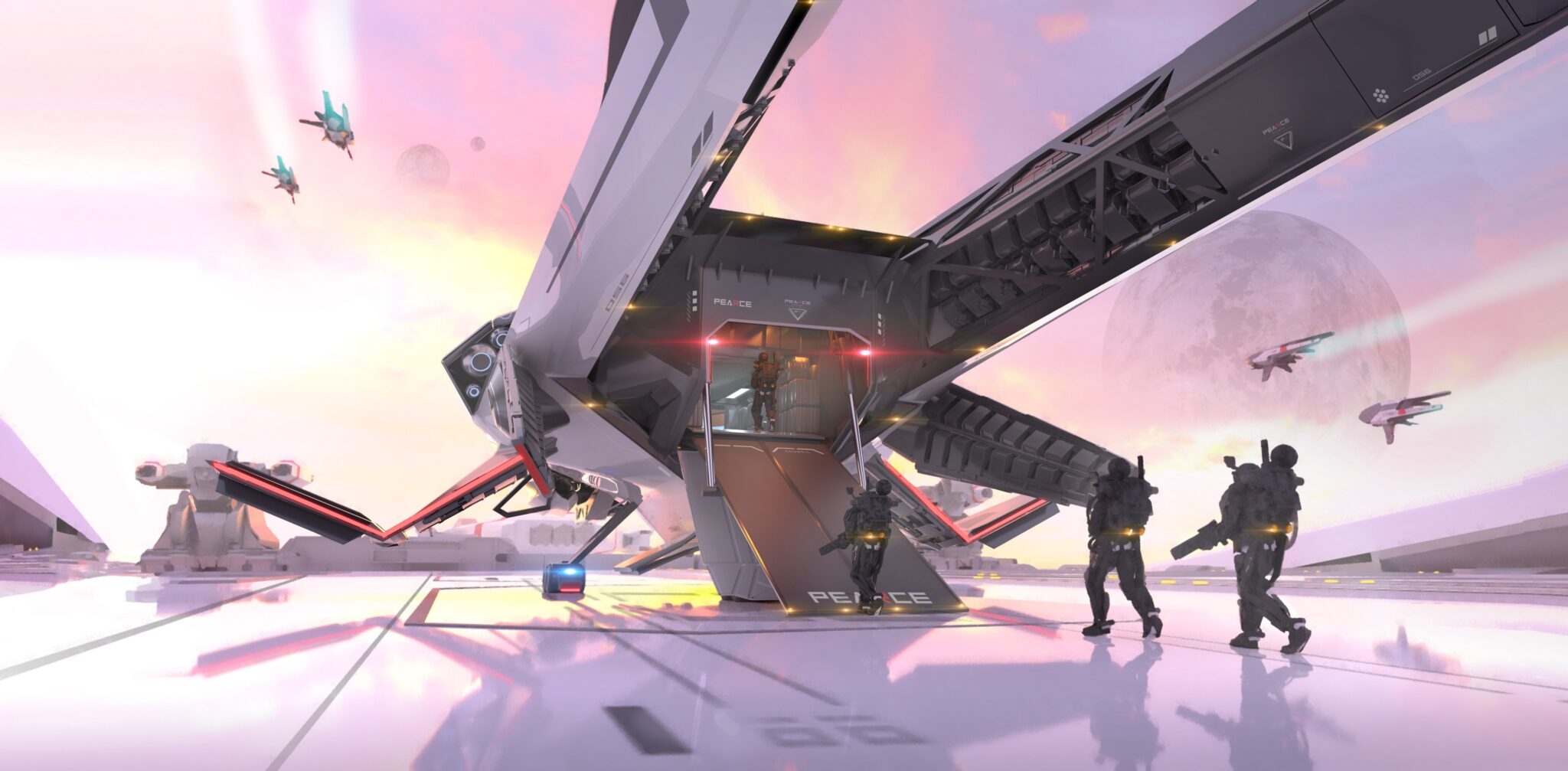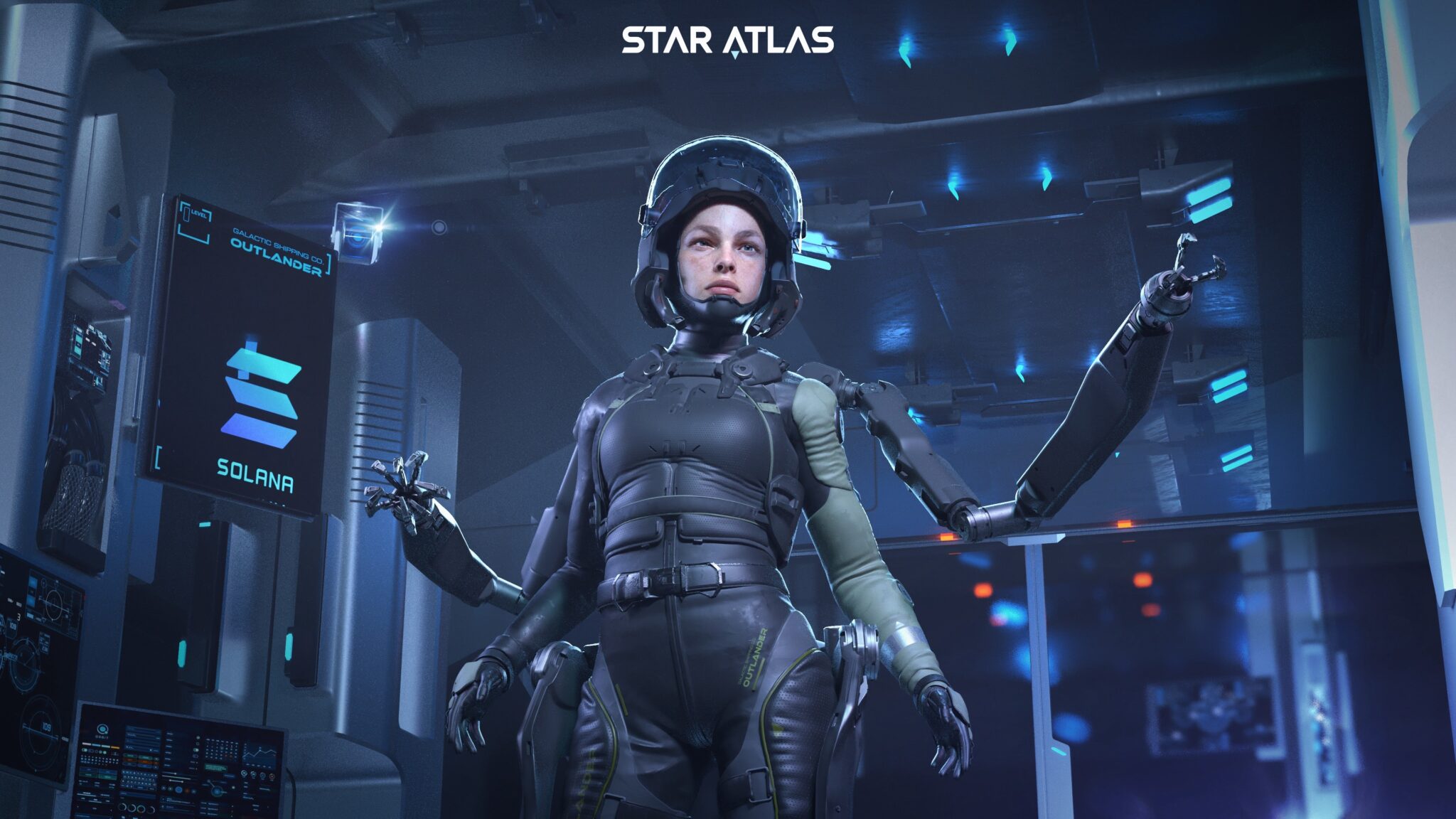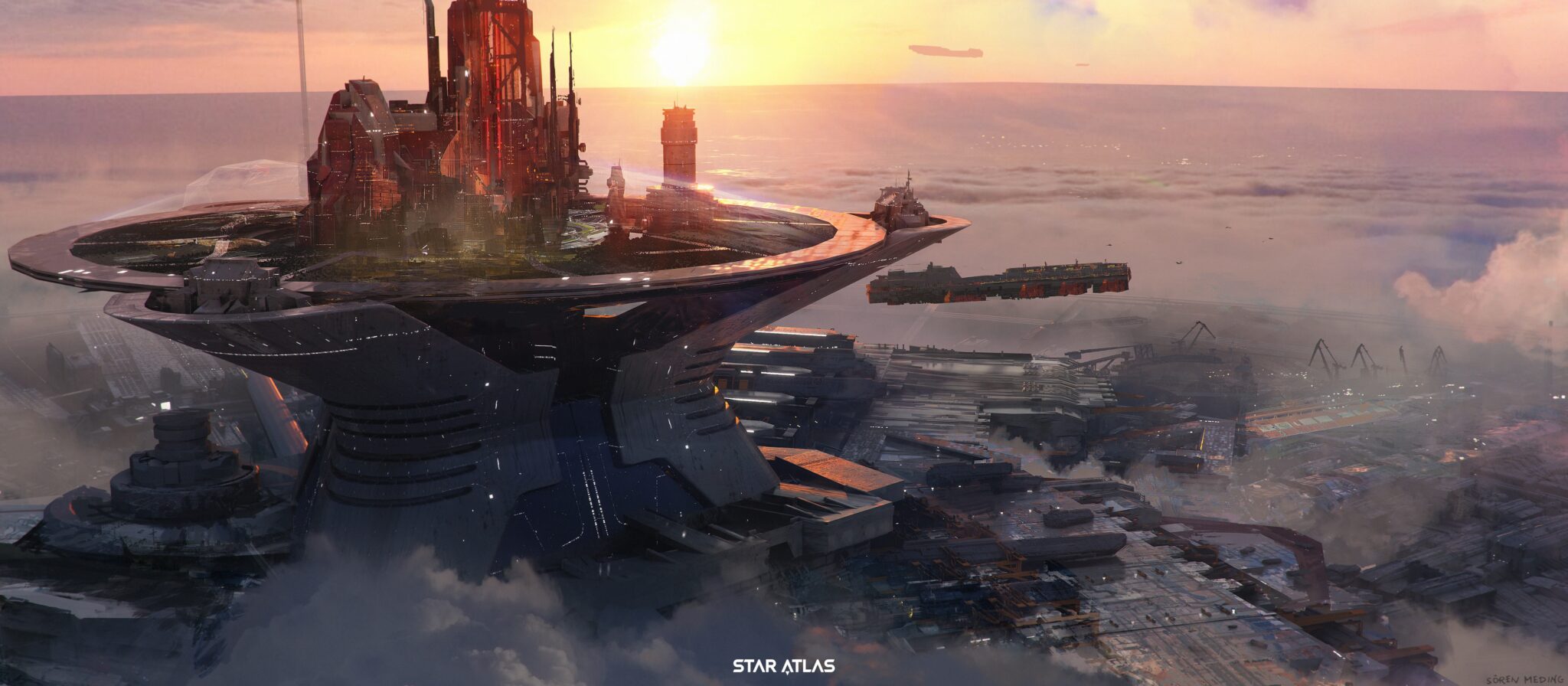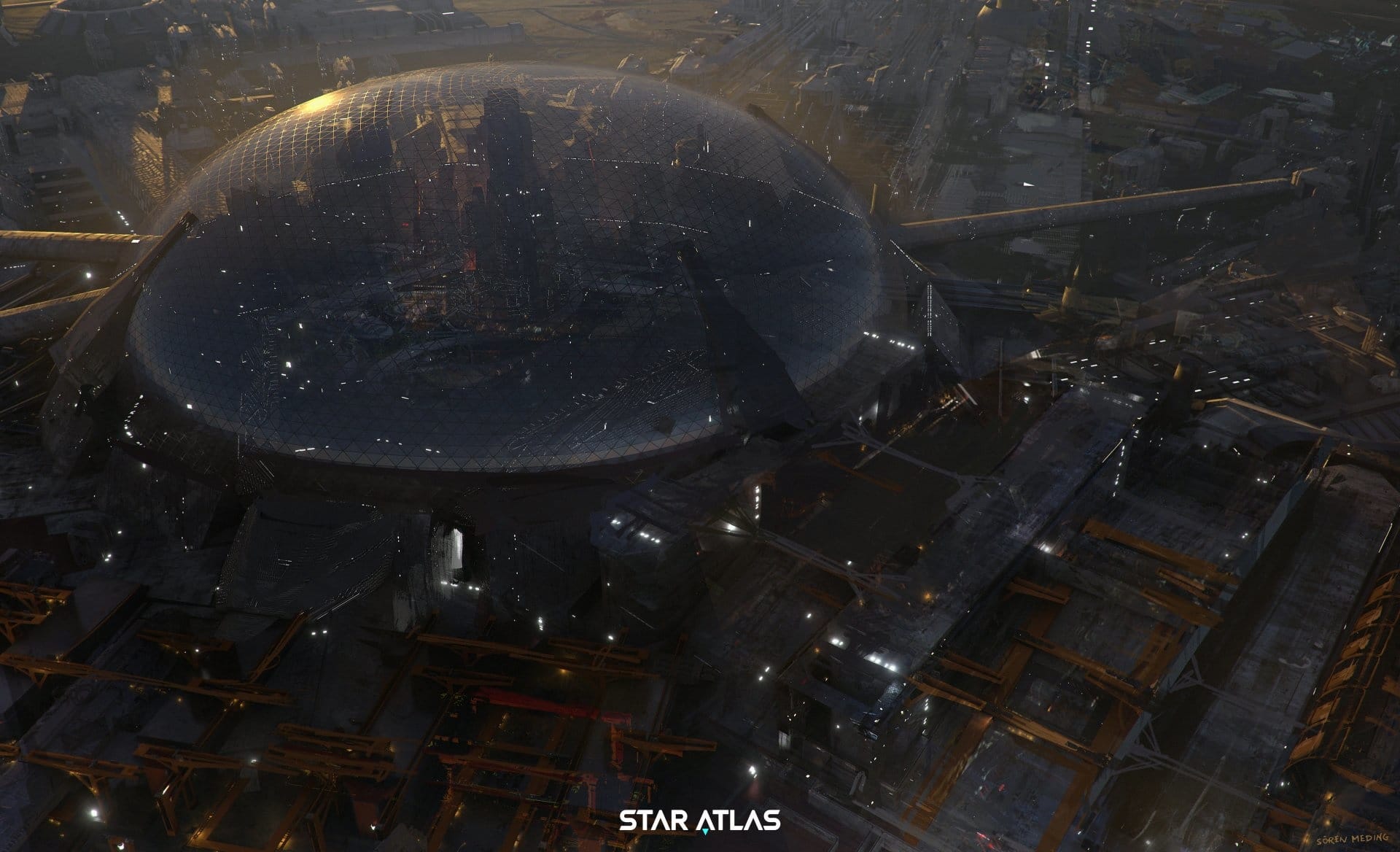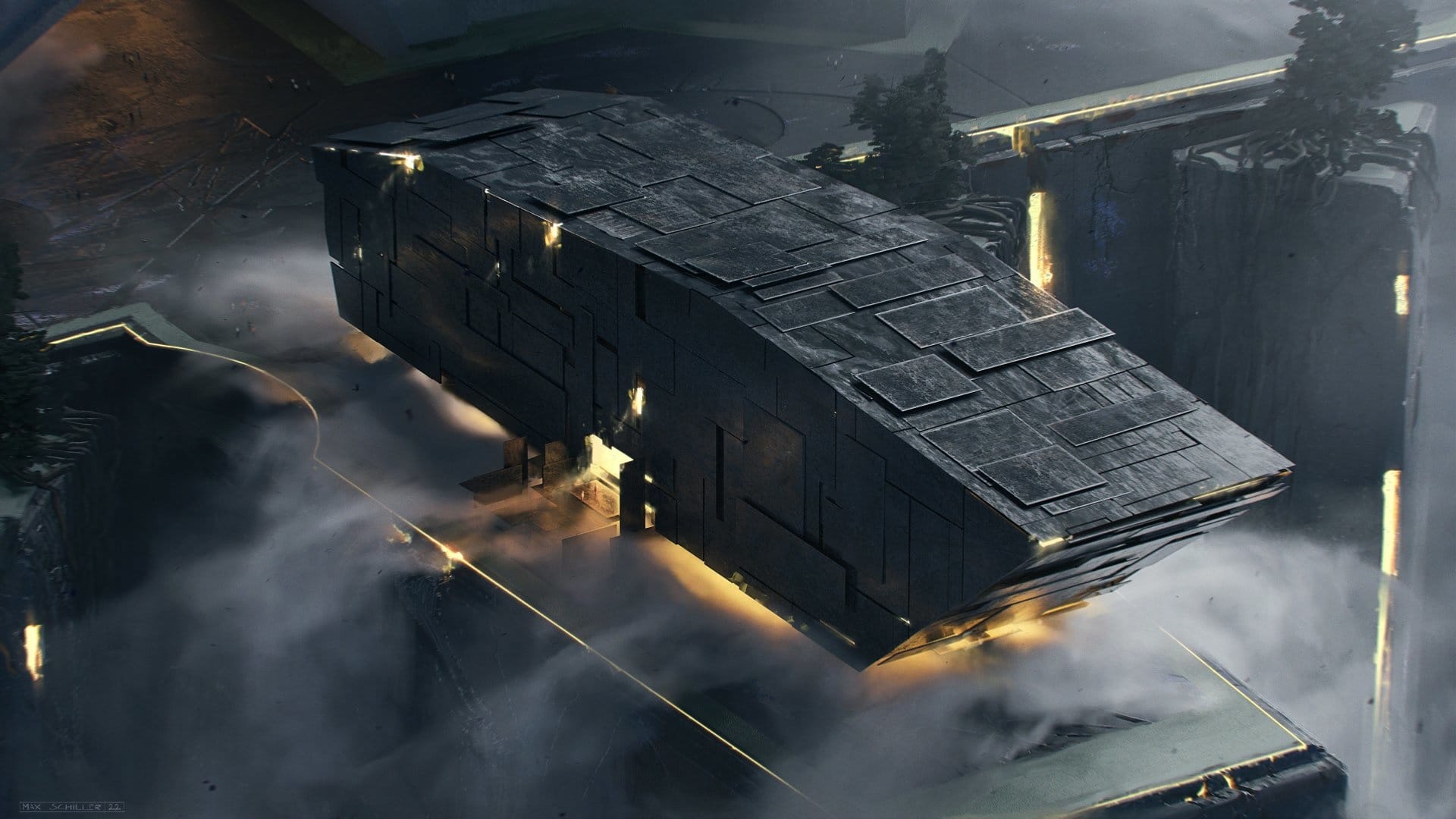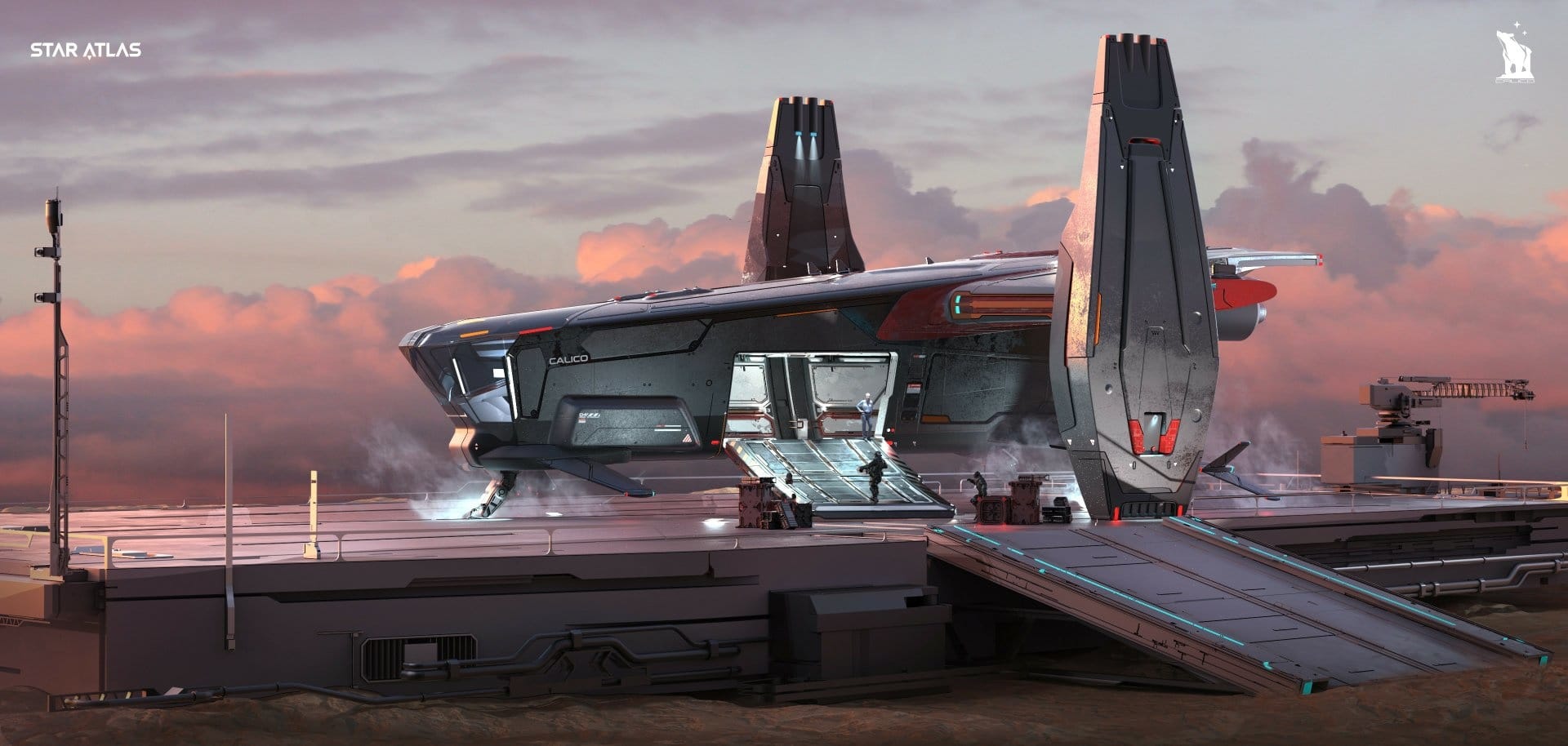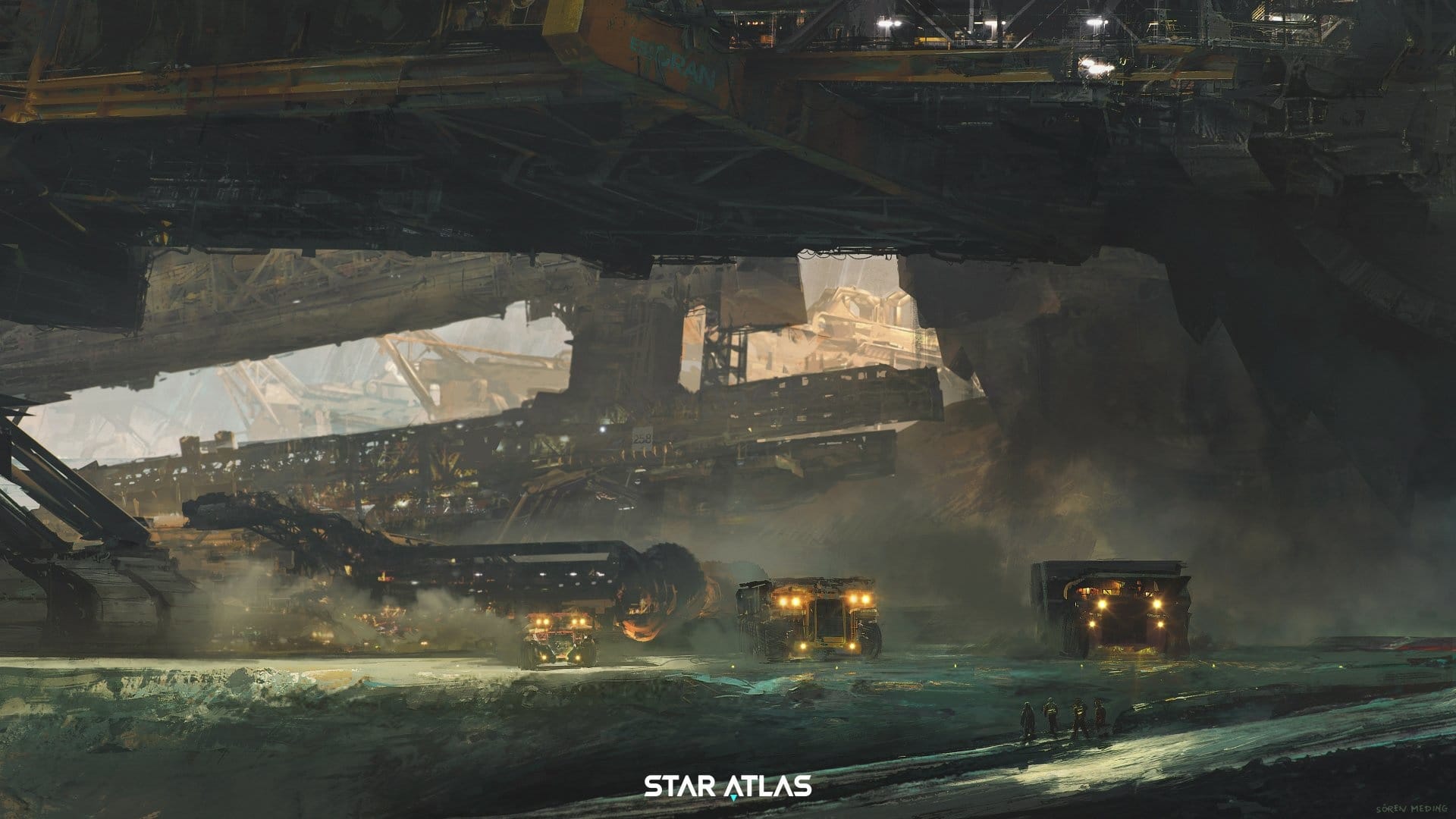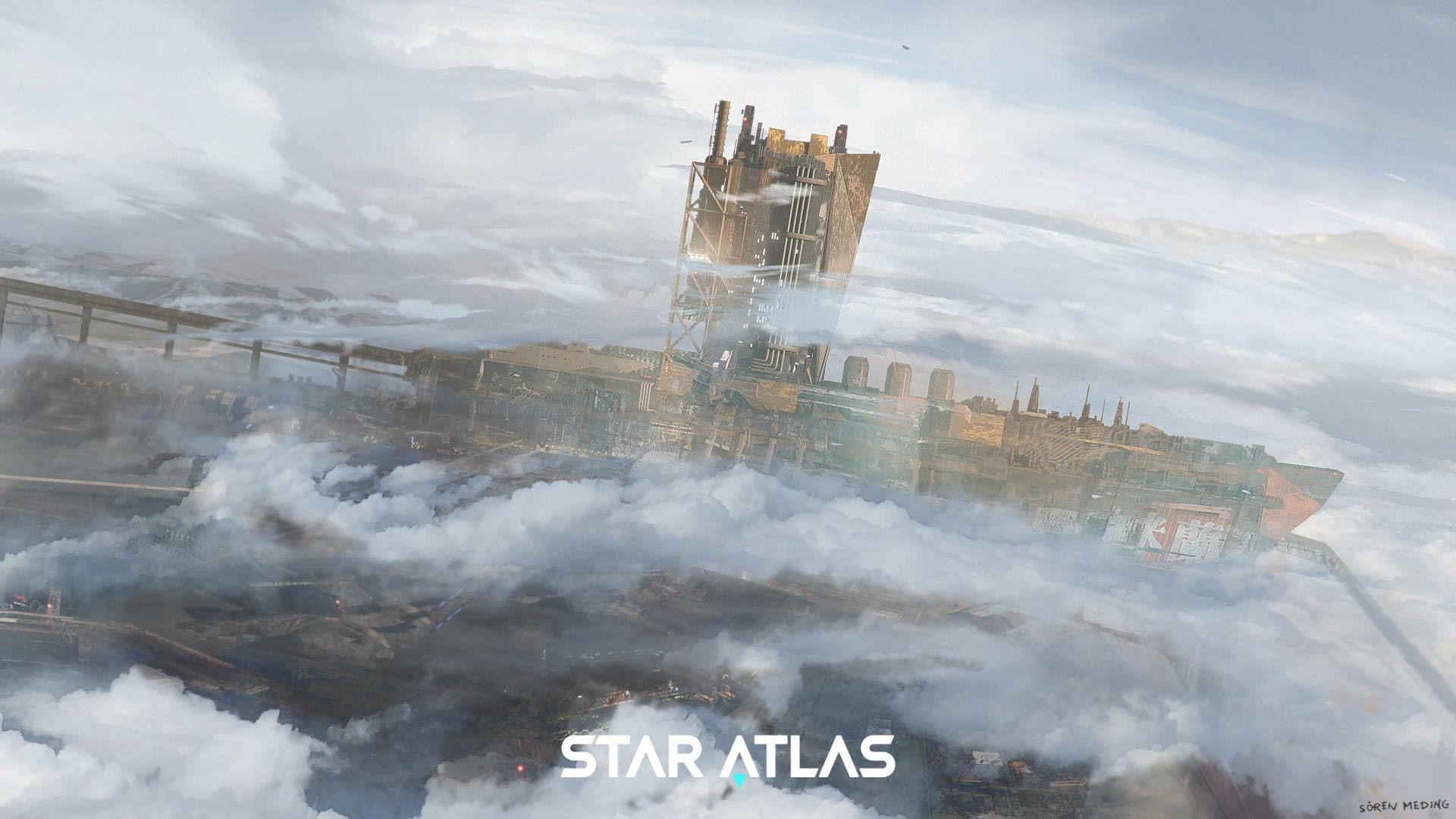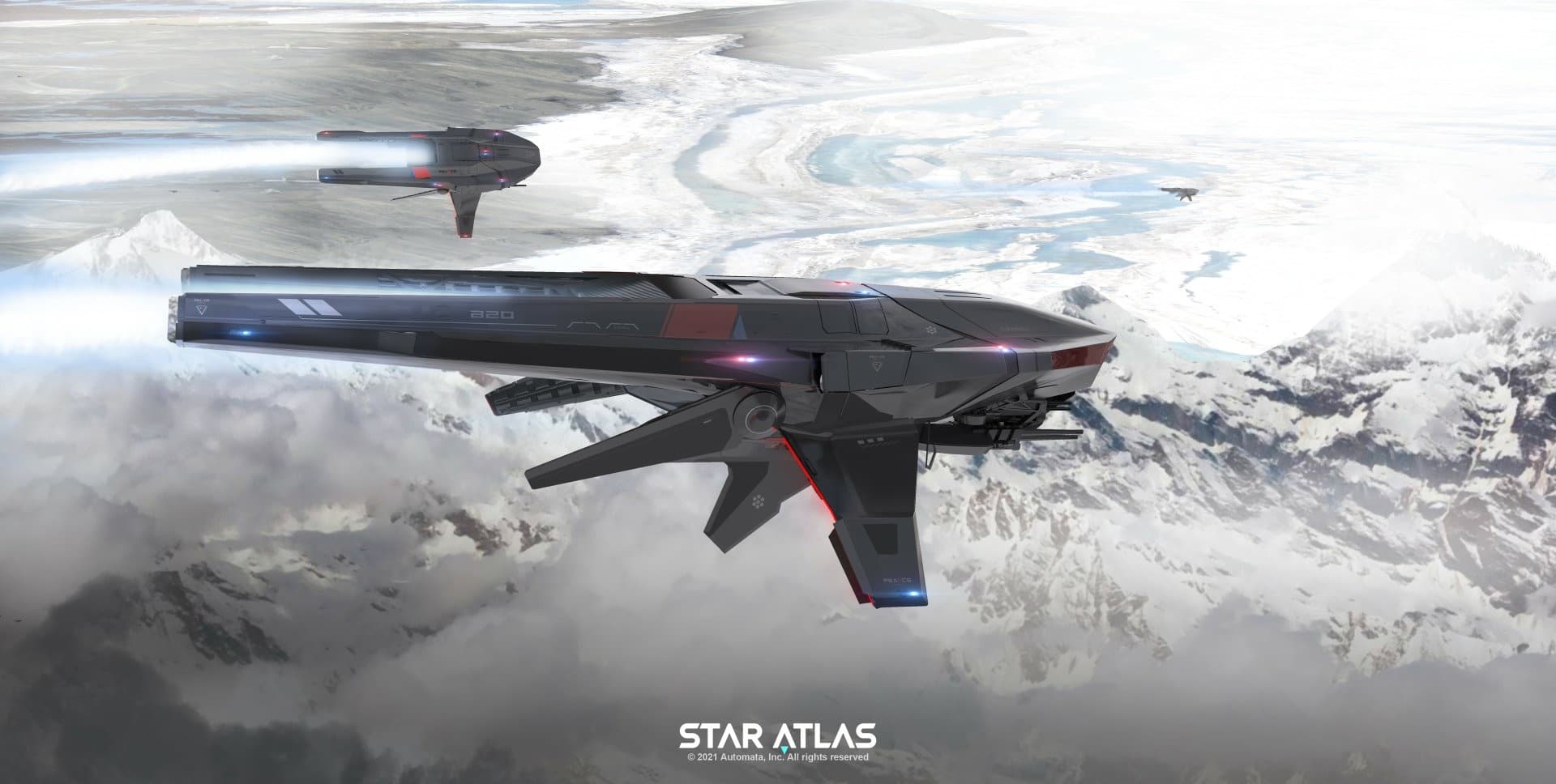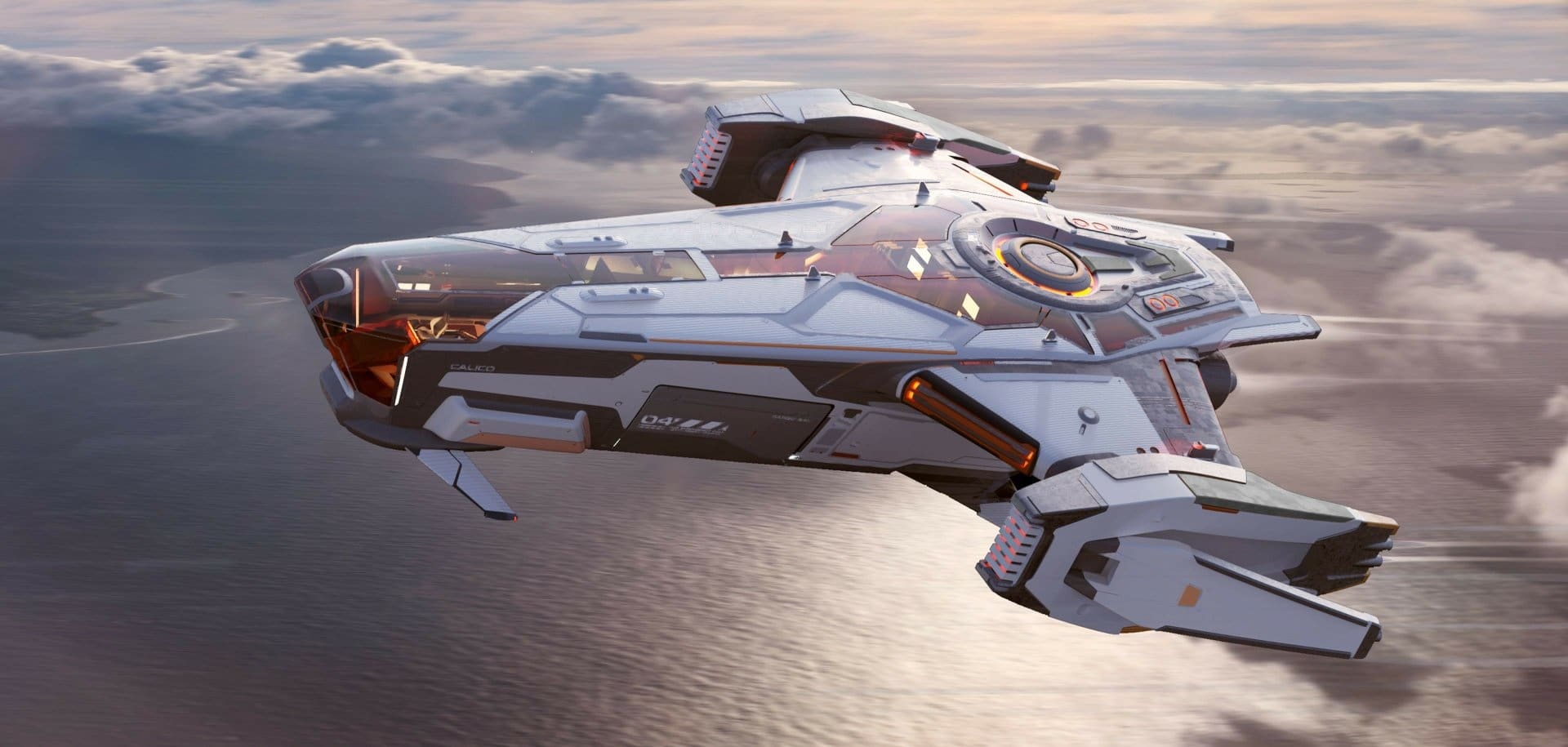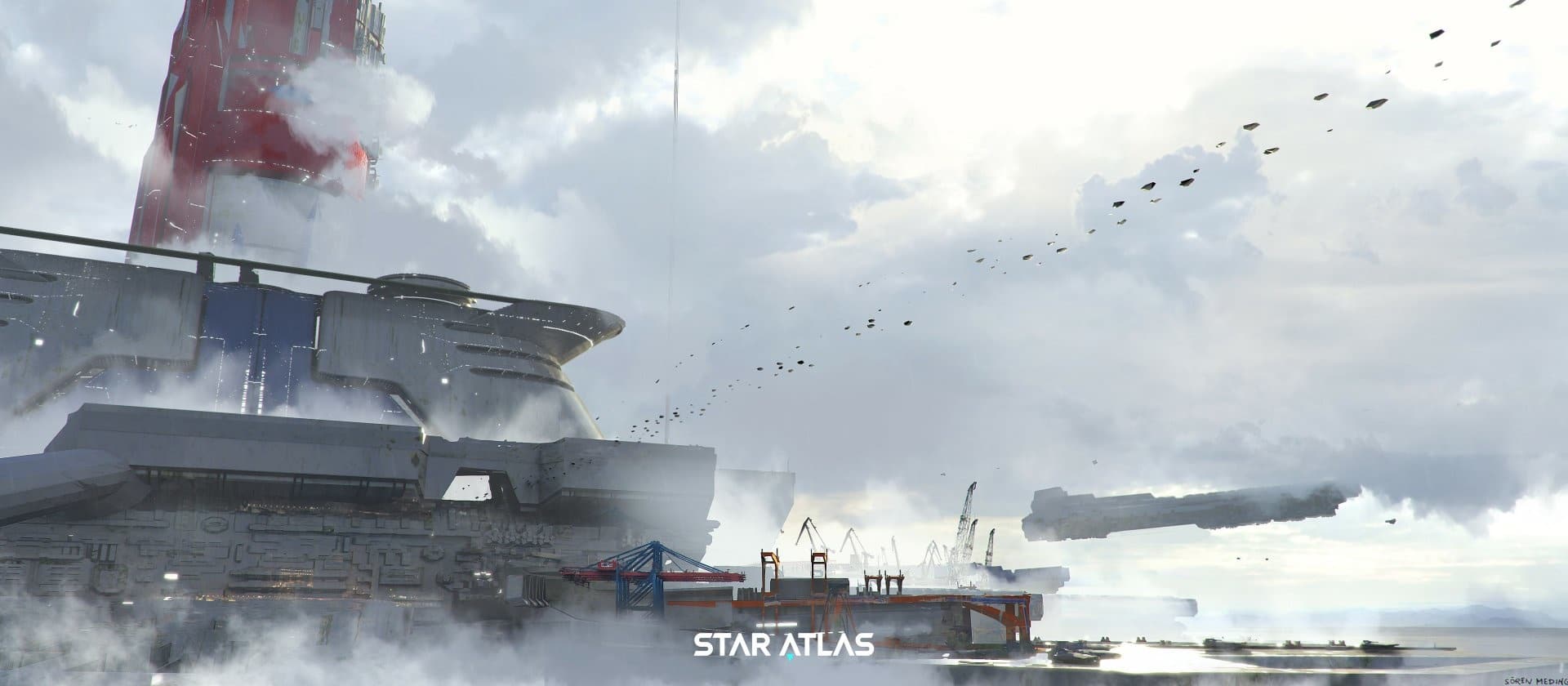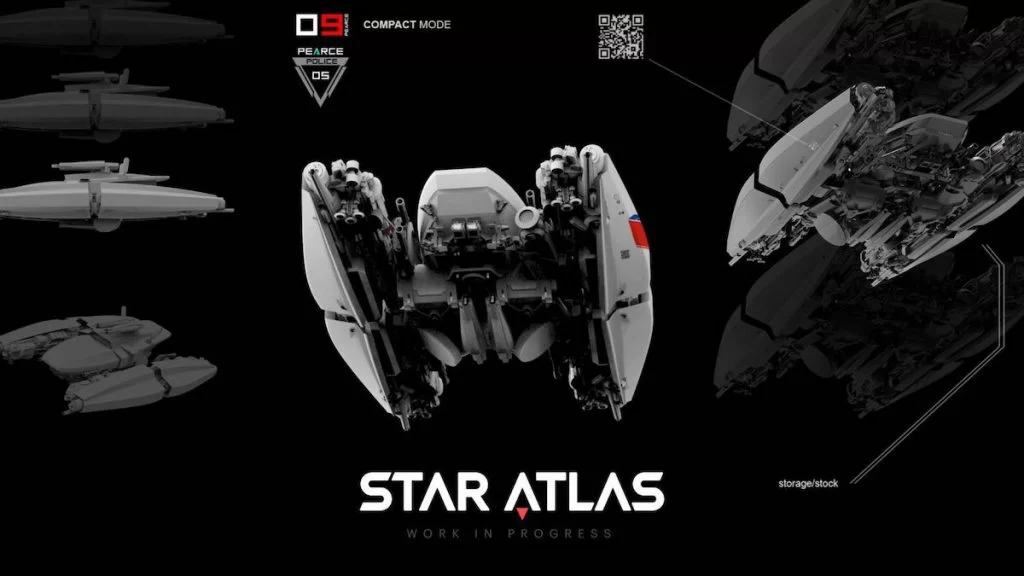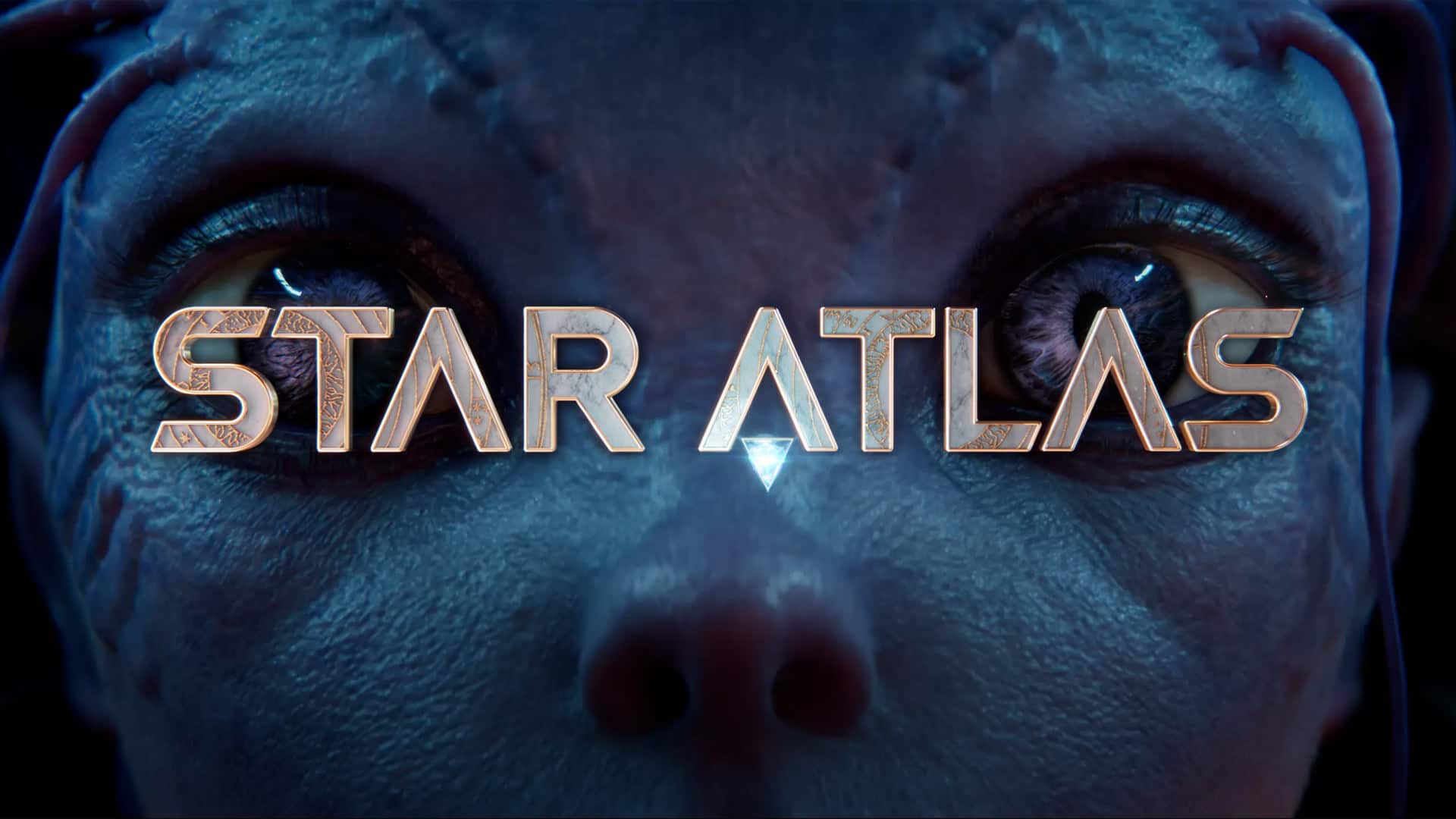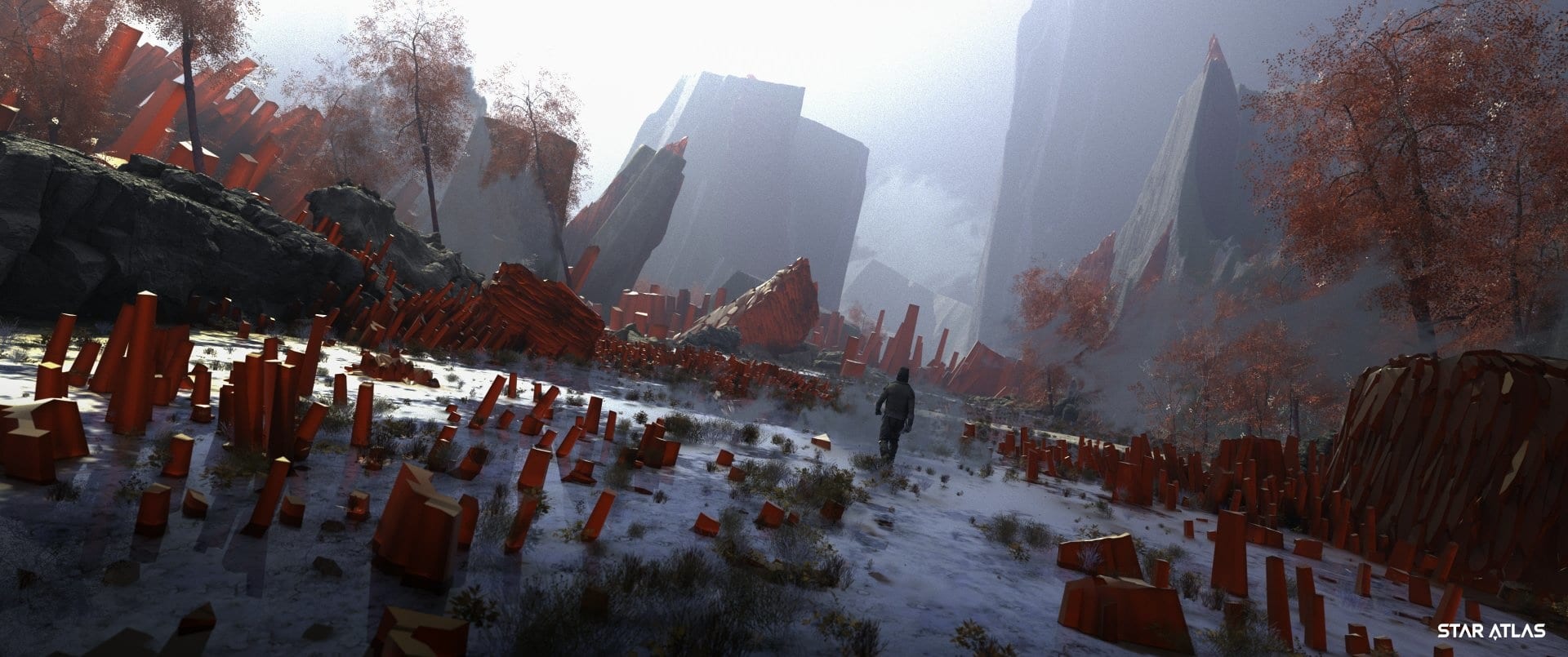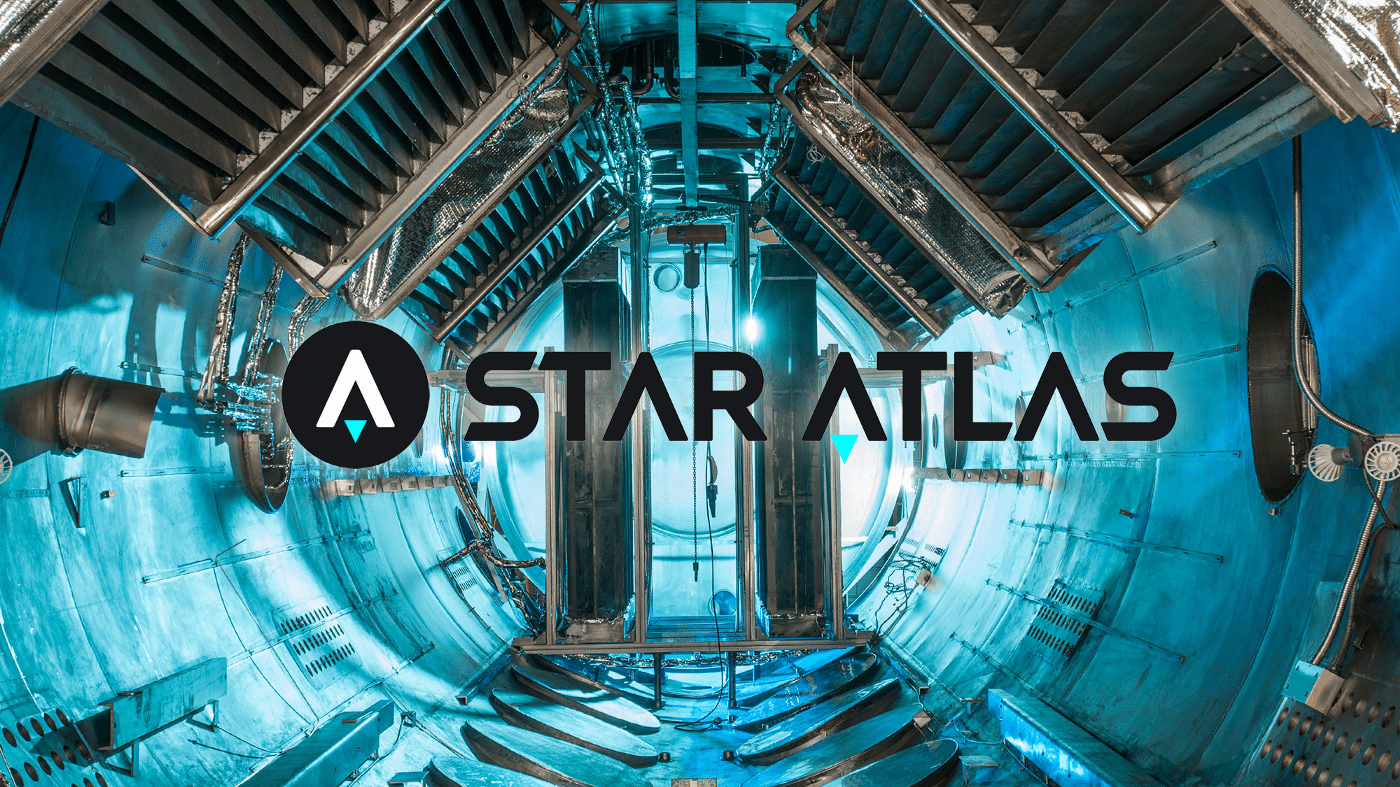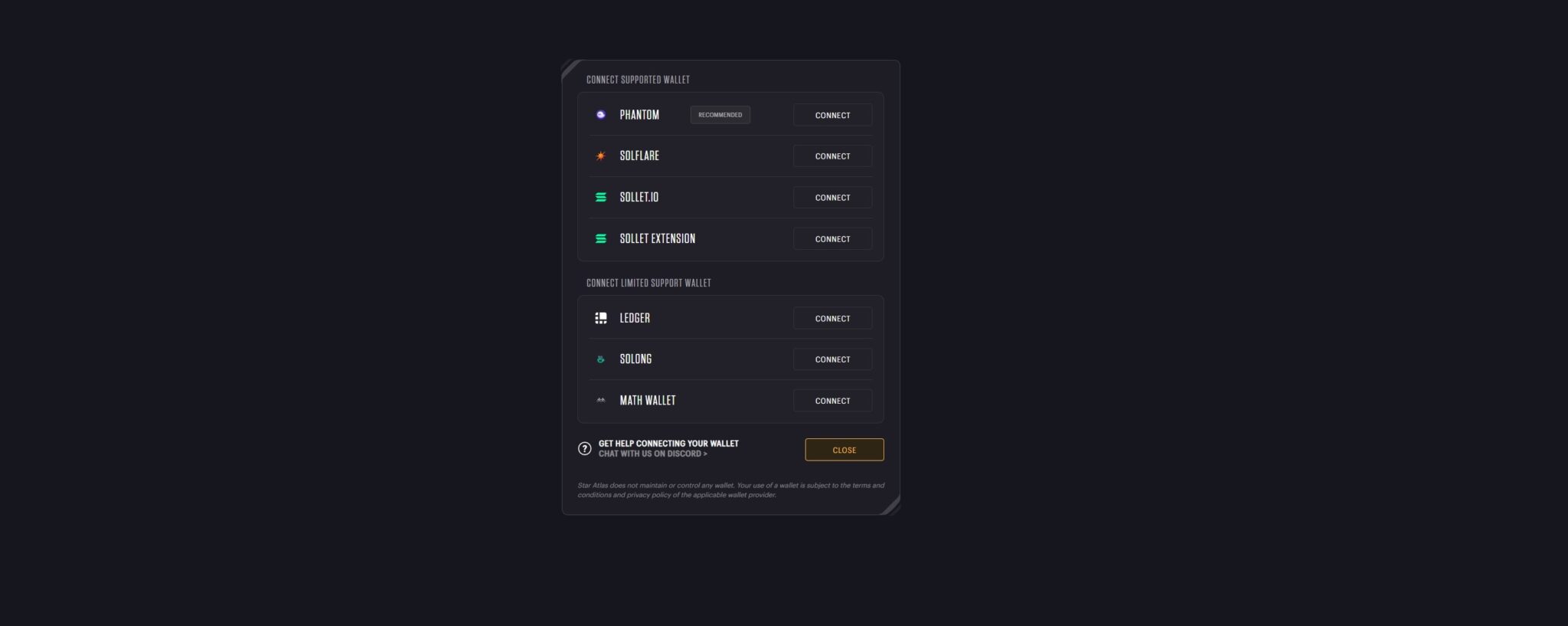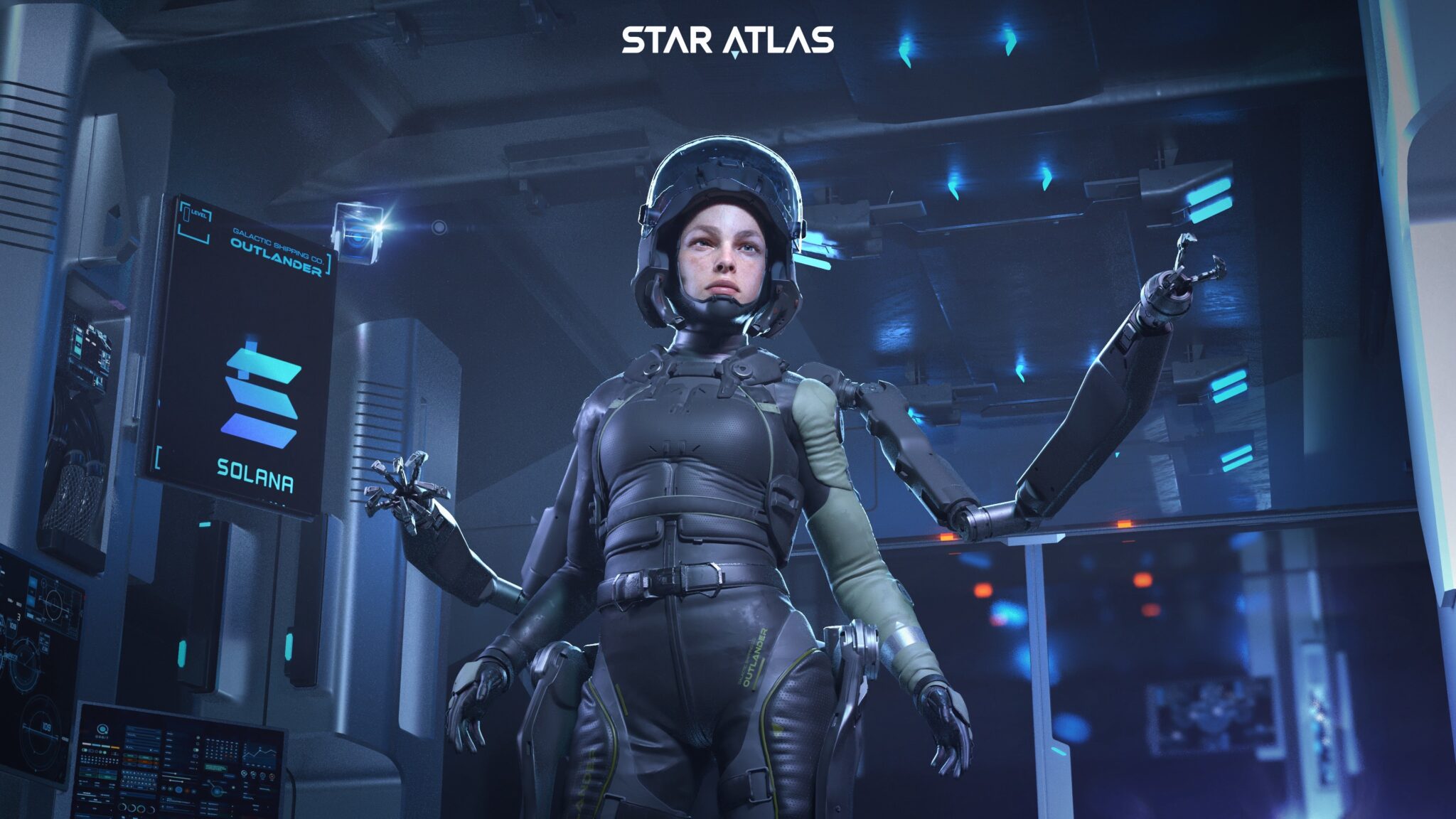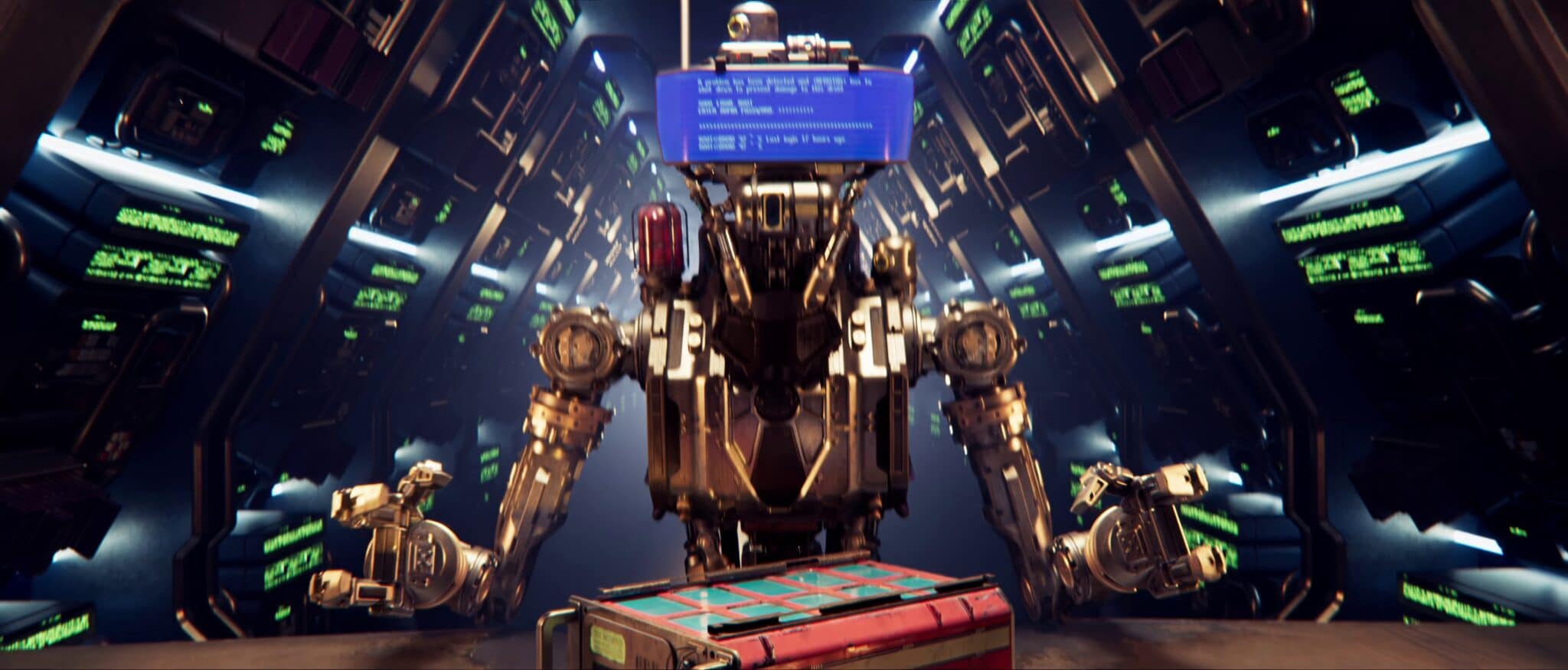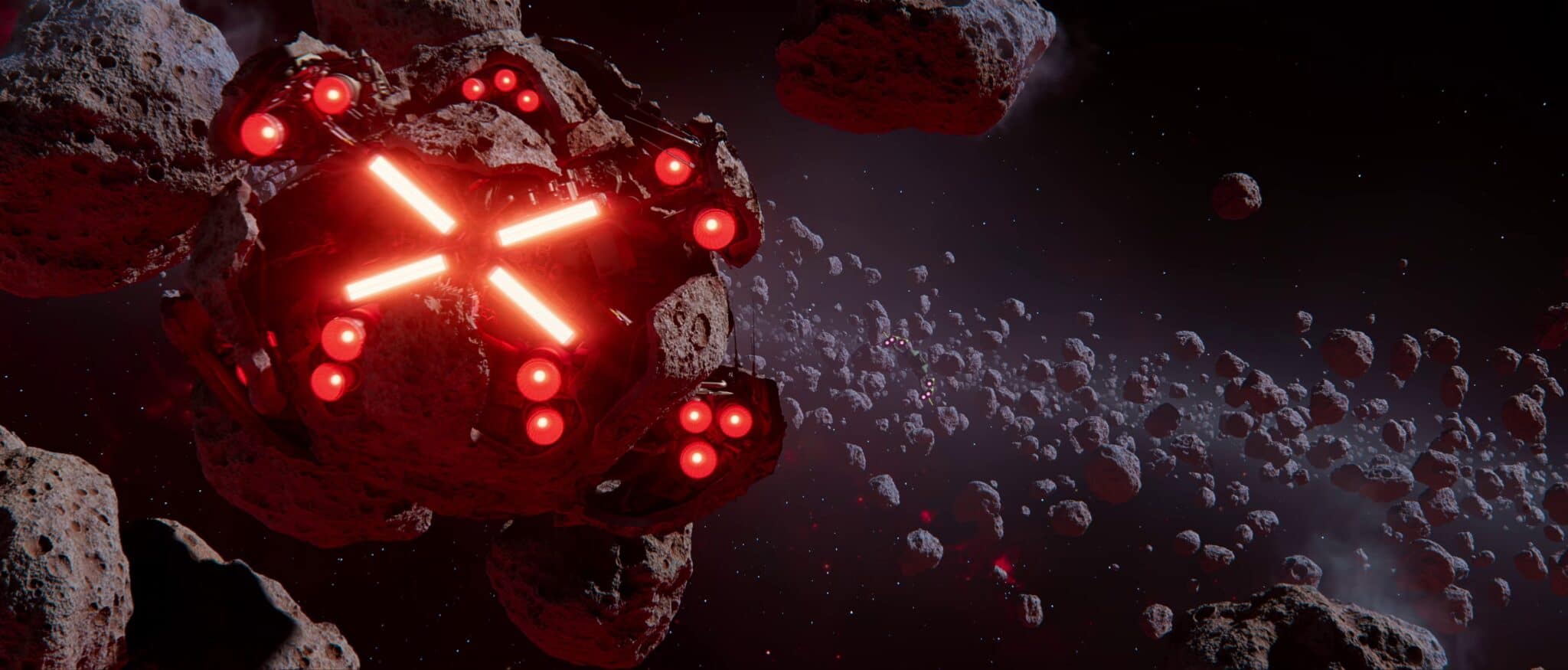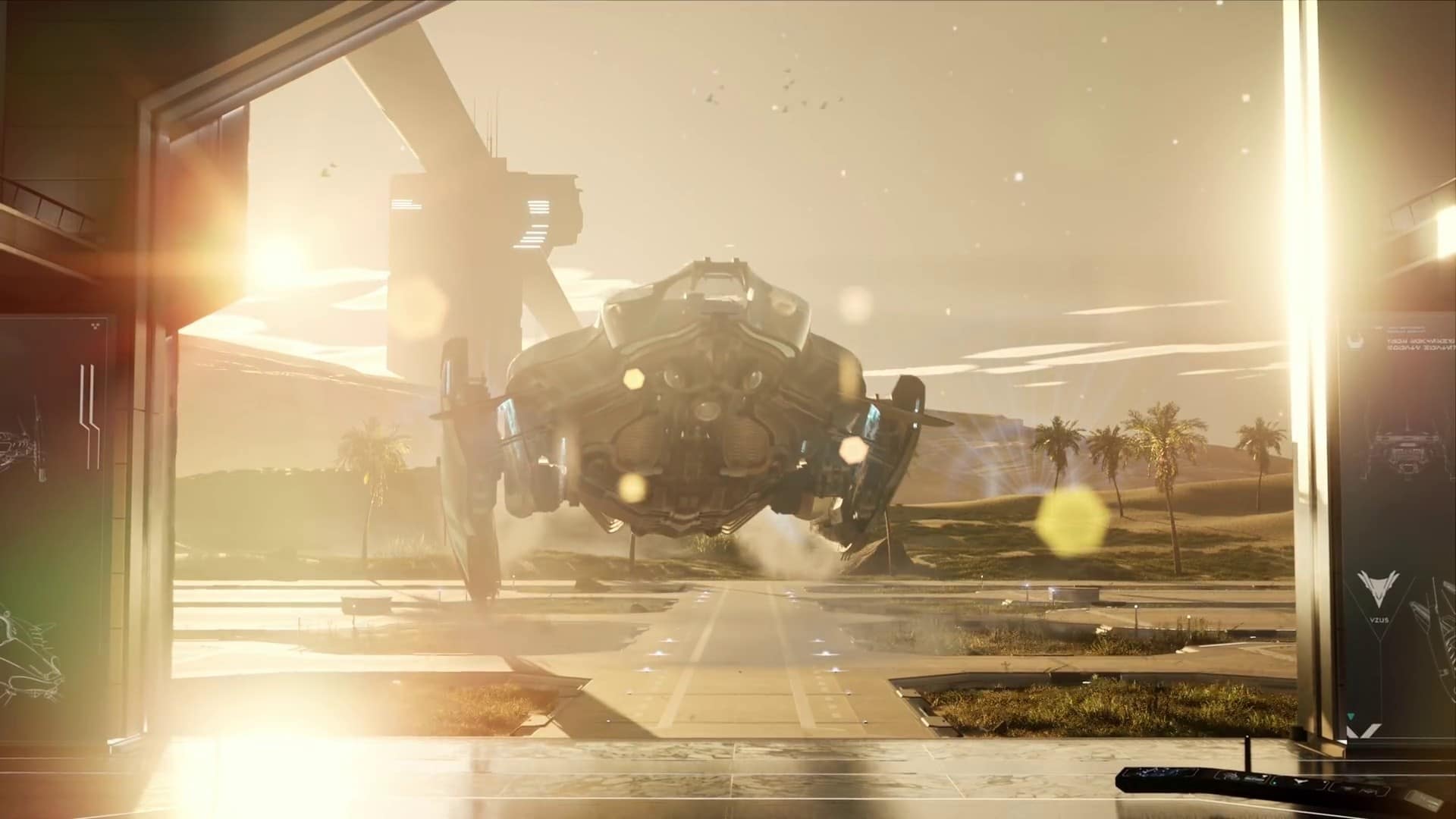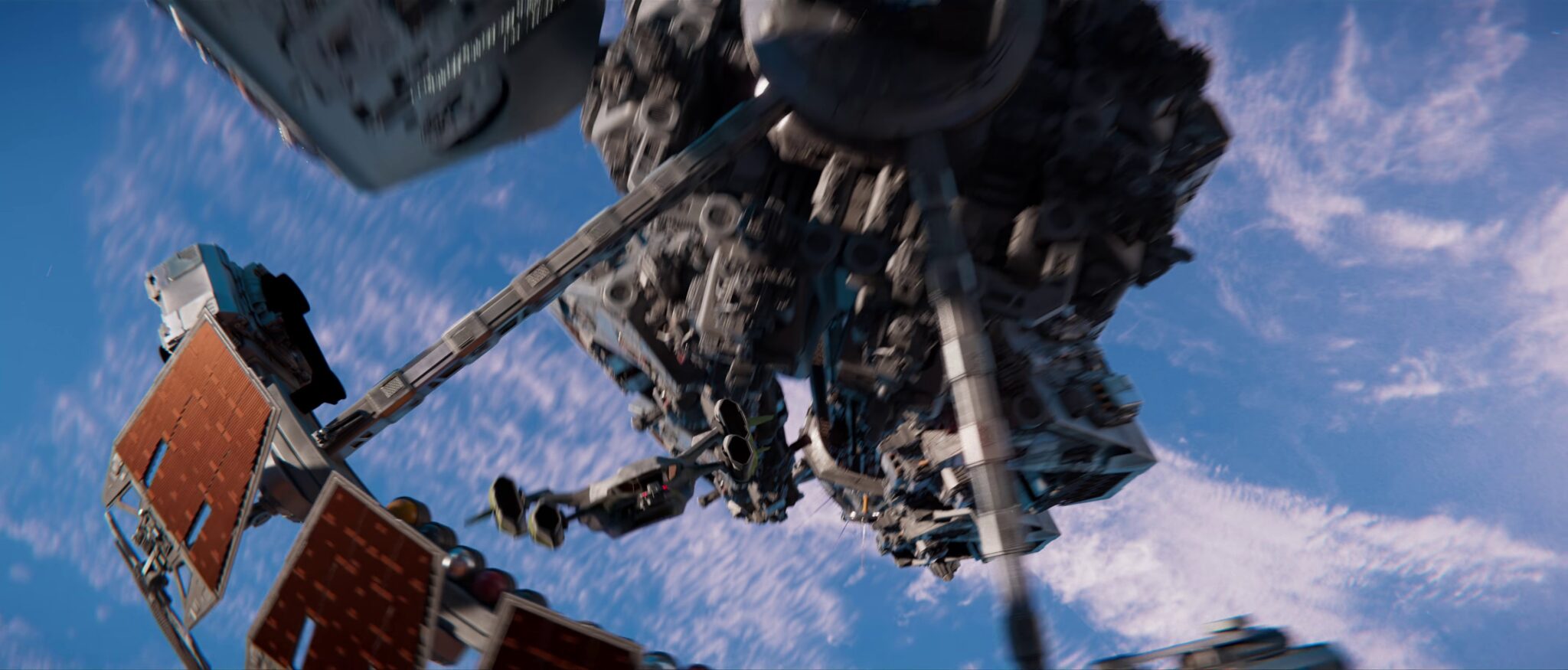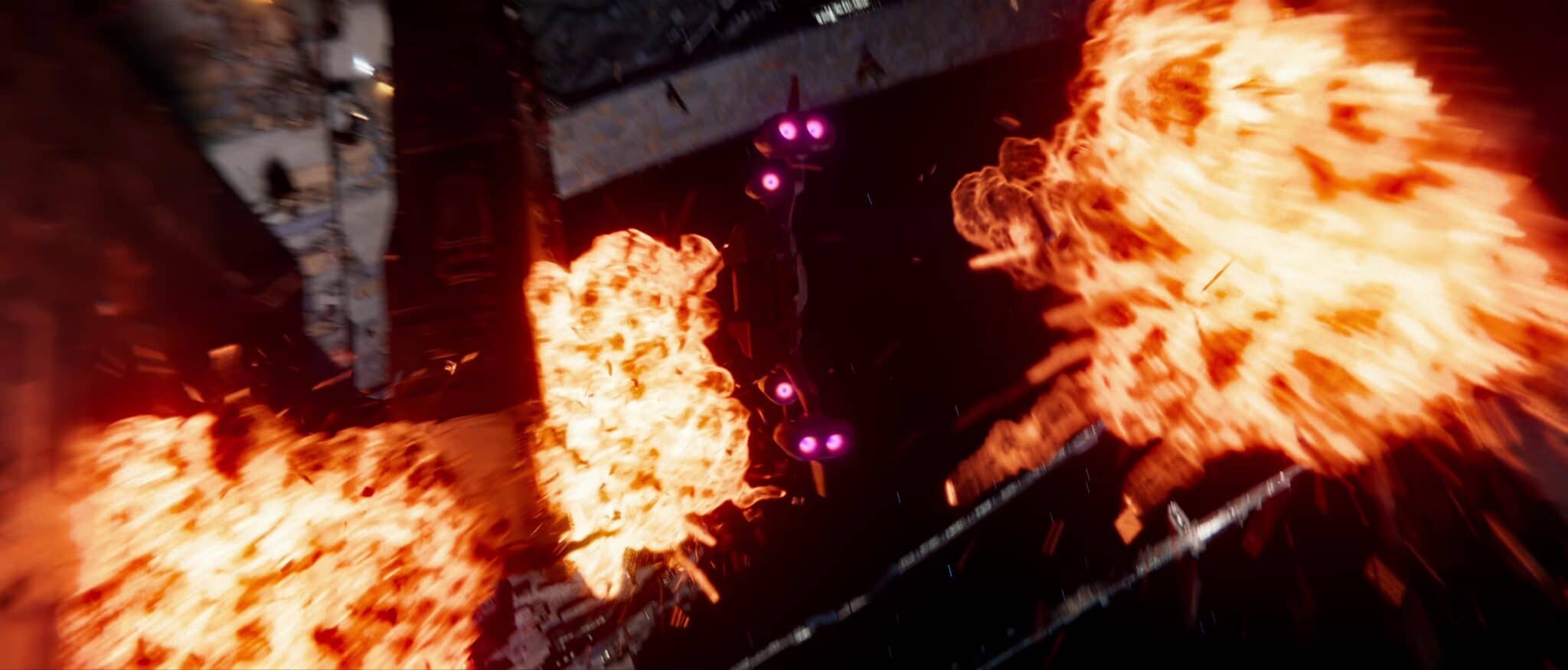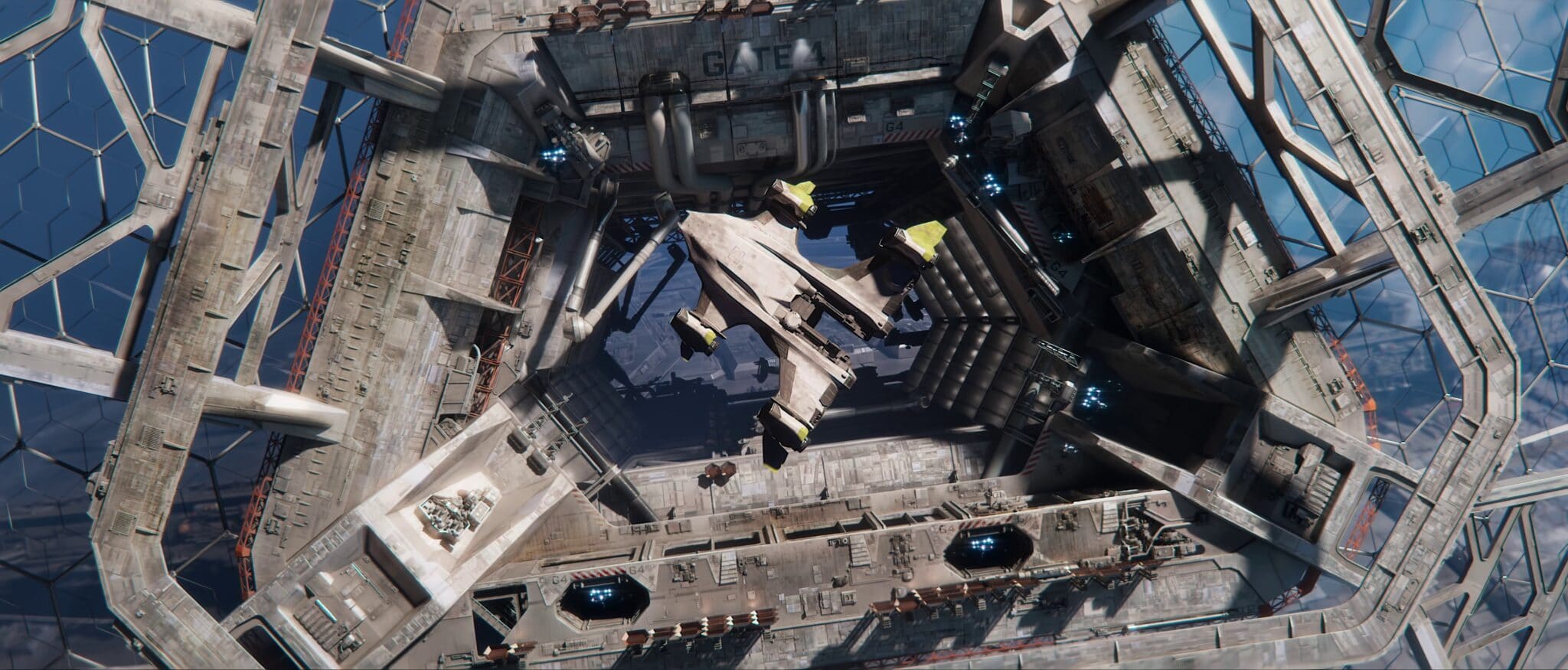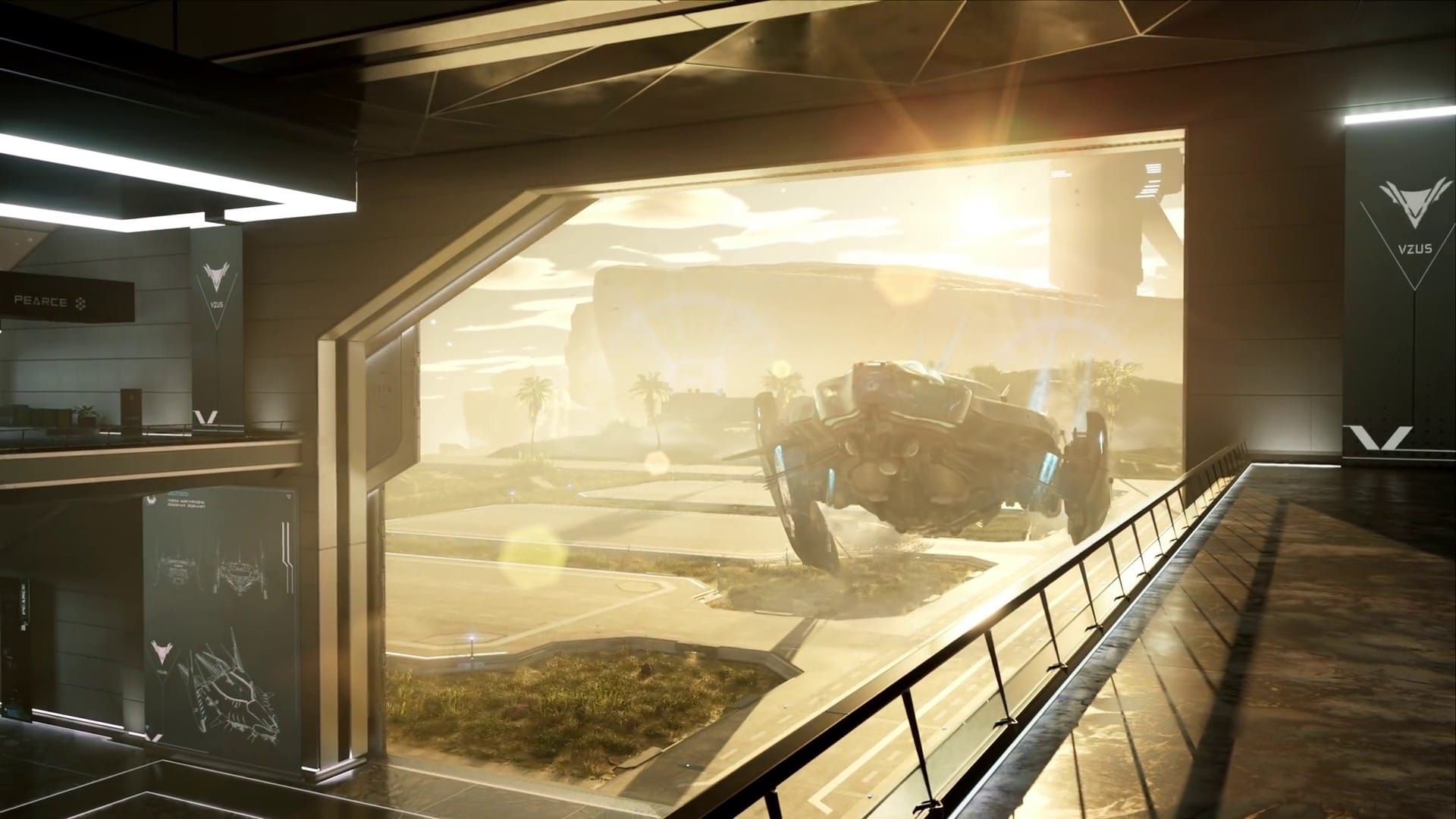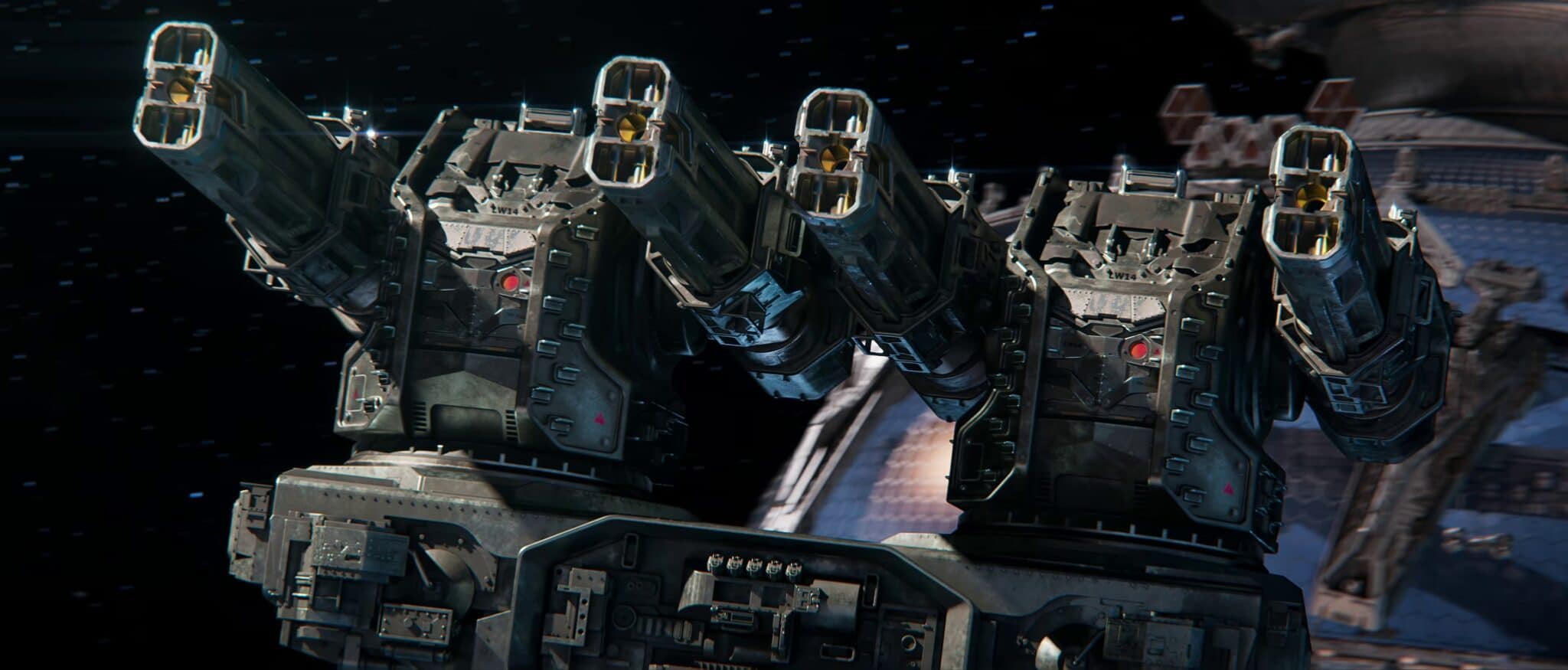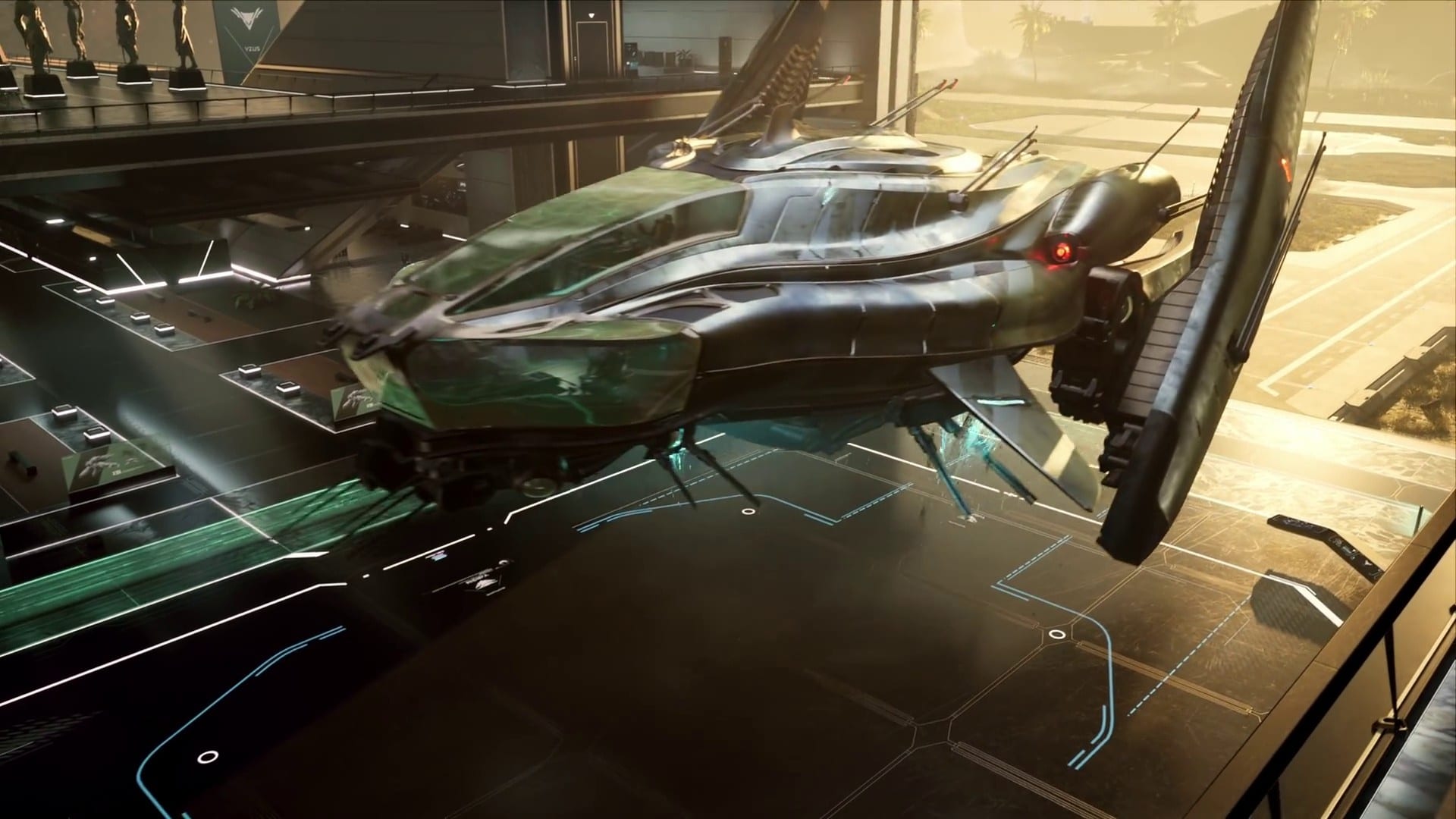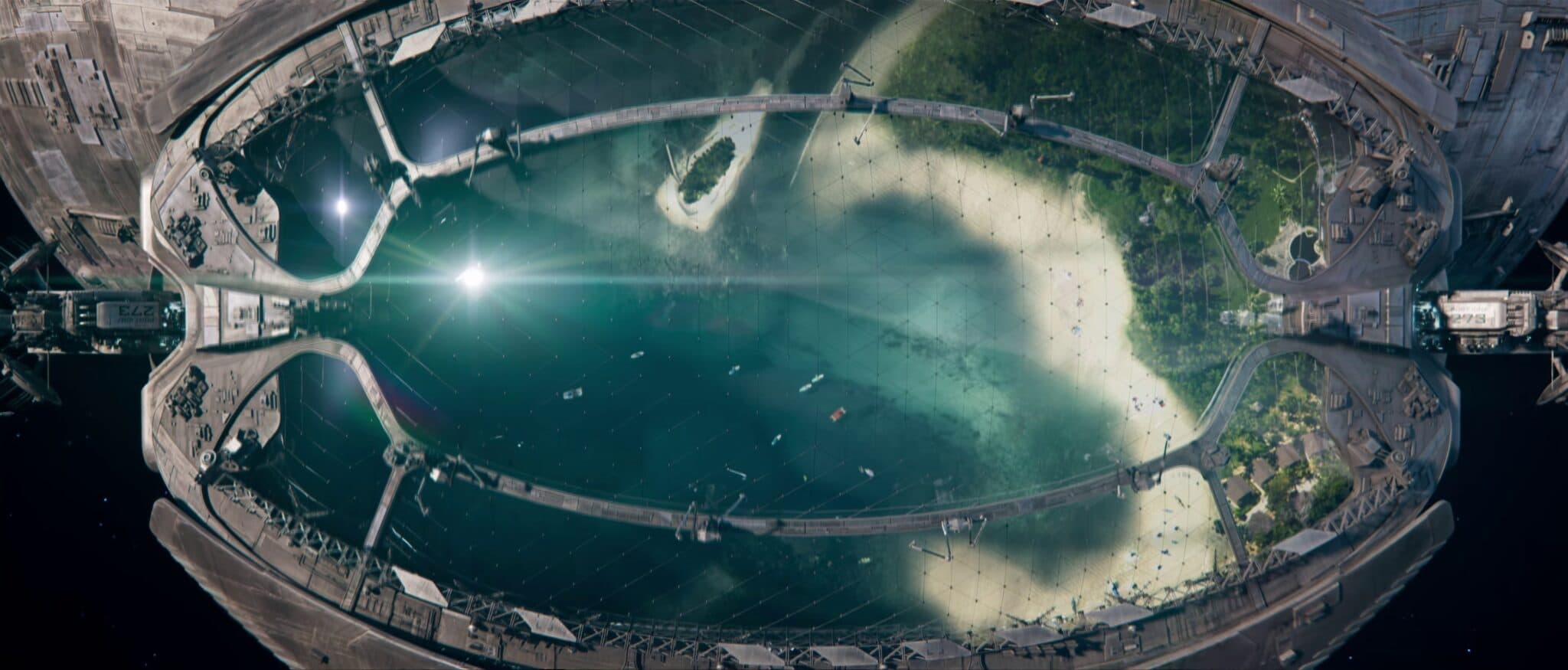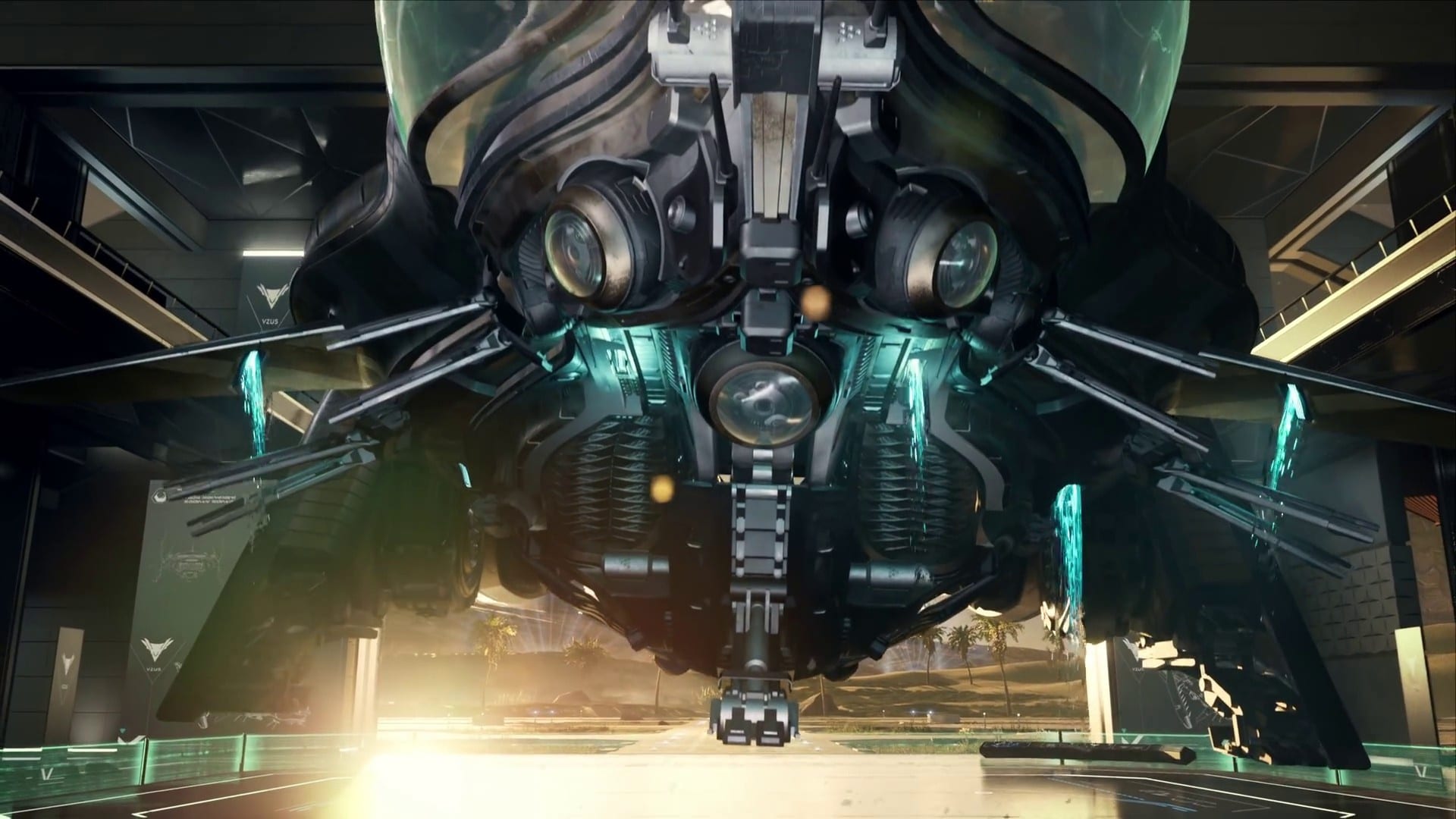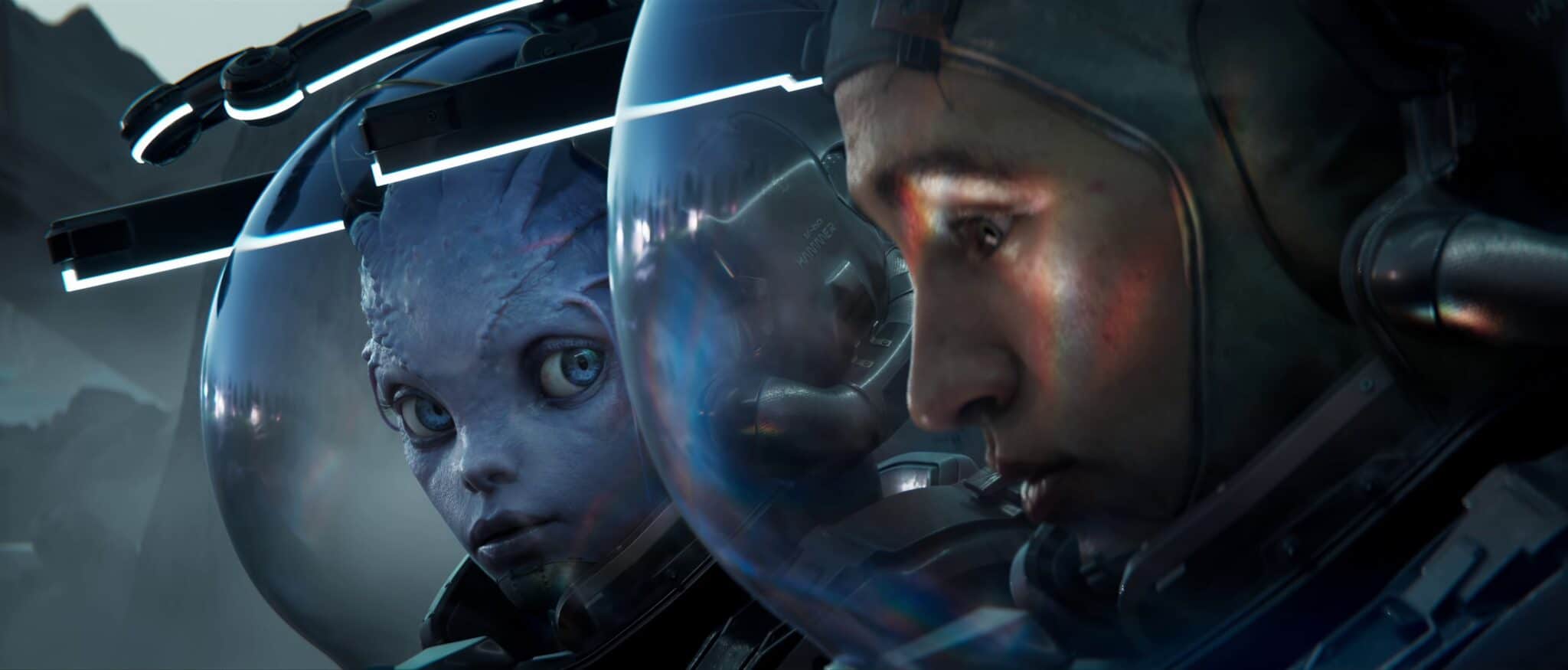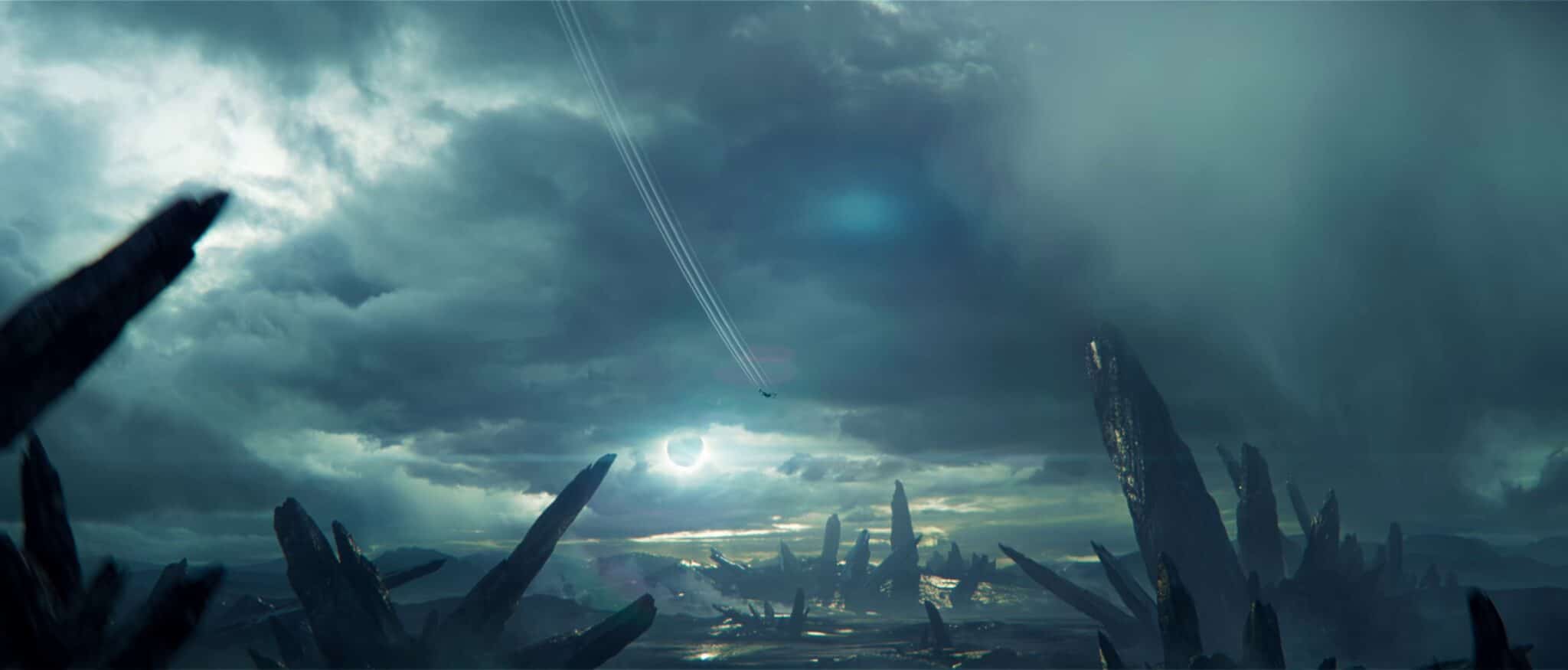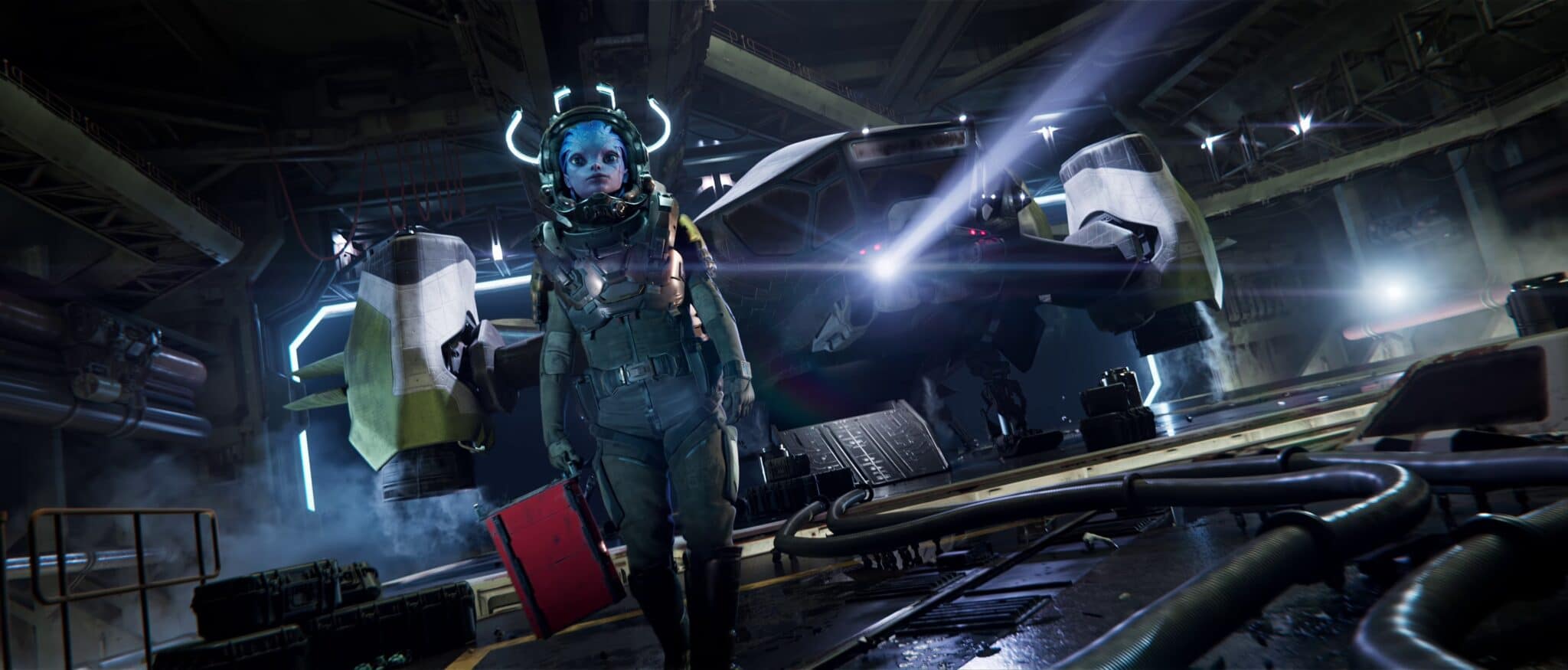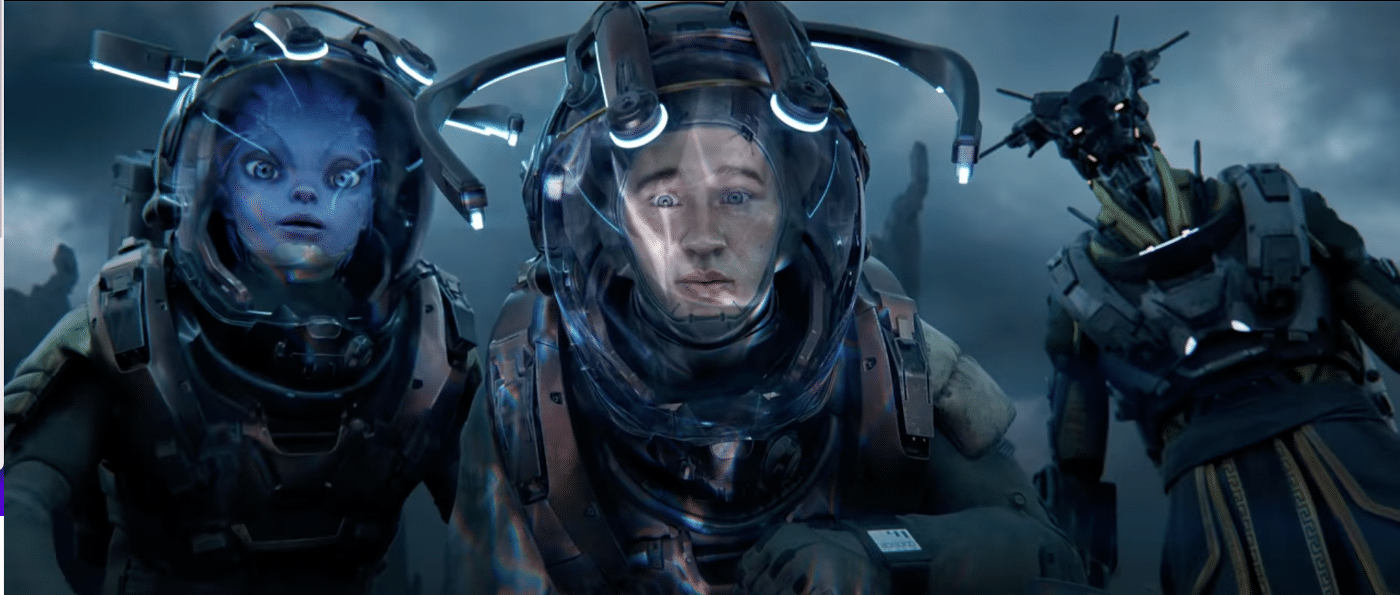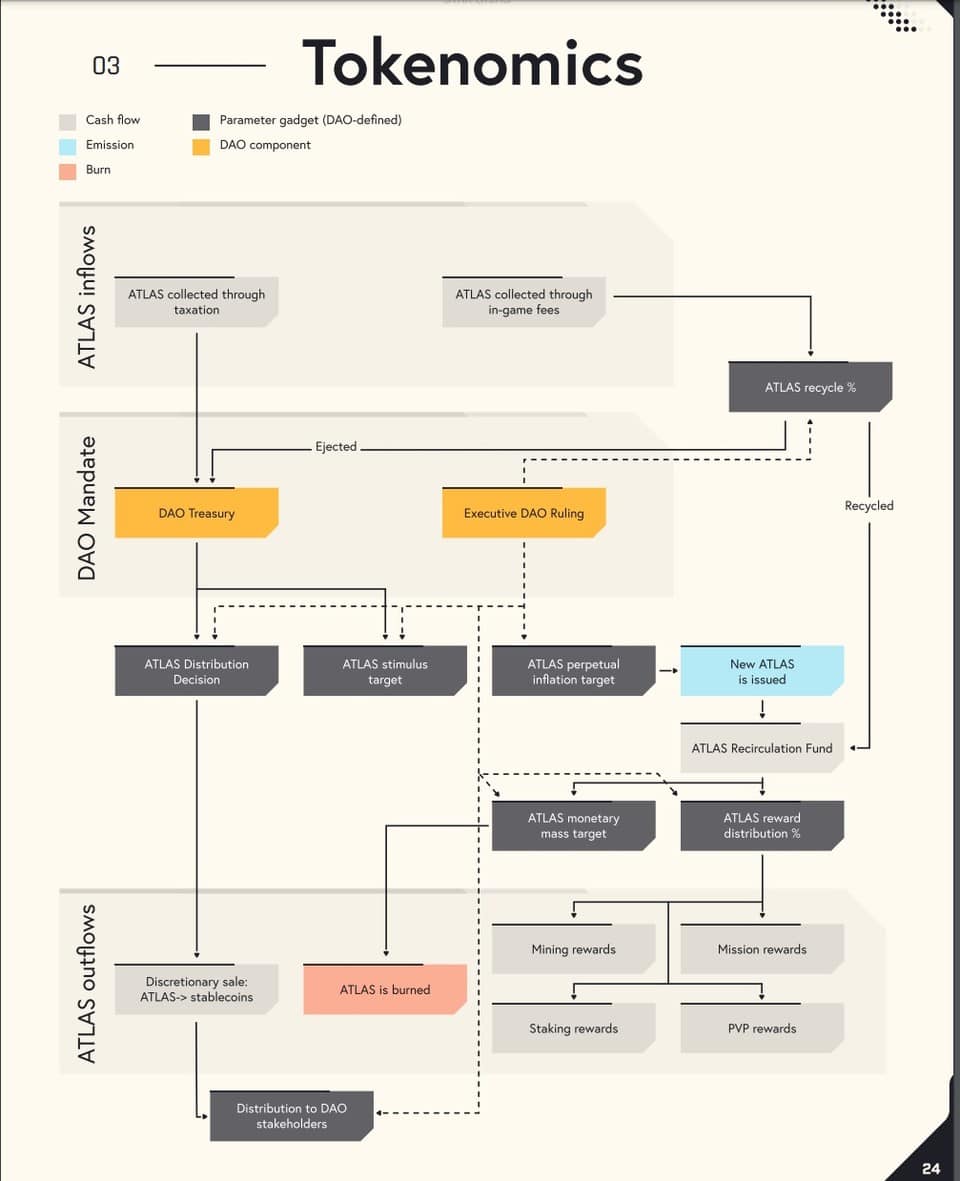Everyone is supposed to play Star Atlas one day and not only have fun but also earn money. What’s behind these crazy plans?
NFTs, or “non-fungible tokens”, divide the gaming world into two disparate groups: On the one hand, the enthusiastic enthusiasts who see the future of monetised gaming in the presumably unique, digital objects for sale. On the other hand, there are the critics who see NFTs simply as a scam: The transaction of a digital good that doesn’t even exist and that the buyer can’t really own. A farce.
Contrary to this much and loudly voiced criticism, a large, international team of developers based in Singapore is preparing to build a complete MMO strategy game on the controversial NFT technology: Star Atlas.
The name and game concept are closely based on the prominent space game Star Citizen, even if the developer team Automata Inc. denies this in an interview. In any case, the plans are similarly ambitious, if not even more insane than Chris Robert’s online sandbox. Players are supposed to mine resources, construct spaceships and wage wars in a gigantic universe. And earn real money in the process.
So far, Star Atlas is mainly theoretical: a render trailer, plus lots of concept drawings that fuel the imagination of space fans from all over the world with cool spaceship designs and pretty space motifs. Concrete information or even gameplay, on the other hand, are scarce, even on the official website of Star Atlas.
GlobalESportNews took a closer look at Star Atlas, which is not due to be released for a few years but is already busy wooing players, and confronted one of the company’s founders with the most pressing questions: Why an NFT game? How does the monetisation of the Metaverse space adventure work? And when is it even supposed to start?
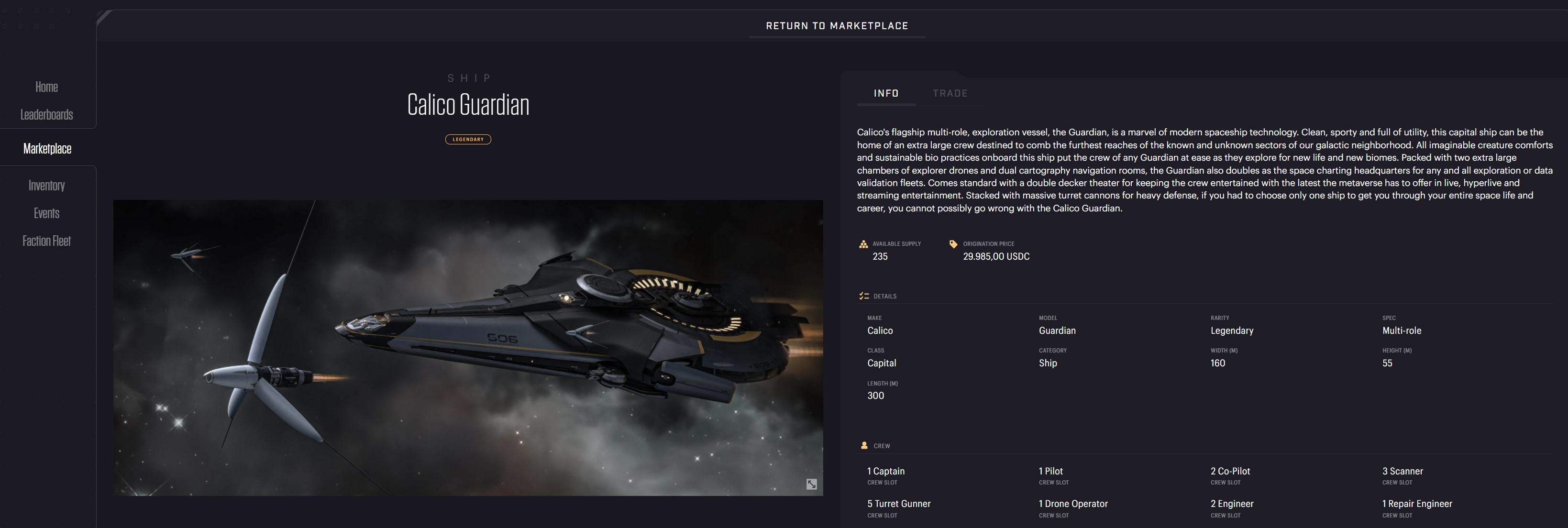
Table of Contents
Automata: Four entrepreneurs want to make history
The vision of Star Atlas (slogan: “History has begun”) is firmly linked to the self-image of the development team, first and foremost the four founders of Automata. Therefore, it is first worth taking a look at the most important minds and their lives before Star Atlas, before we take a closer look at the game.
Automata was founded in the summer of 2020 by four men:
- Michael Wagner, multiple company founder and blockchain enthusiast.
- Pablo Quiroga, successful start-up founder focusing on herbal remedies and use of cannabis in psychotherapy.
- Danny Floyd, classic game industry veteran who developed and distributed games first for Electronic Arts, then as an independent founder.
- And finally Jacob Floyd, the “creative head” of the team with over ten years of experience in app development and an expertise in stylish designs.
All four are familiar with the tech industry and start-up world and are well connected. Their work is united by their enthusiasm for new, experimental technology – most notably blockchain and, more recently, now NFTs. They are entrepreneurs who describe their game Star Atlas as a new milestone with great self-confidence and photoshop themselves in astronaut suits for press pictures, because hardly anything shows more pioneering spirit than that.
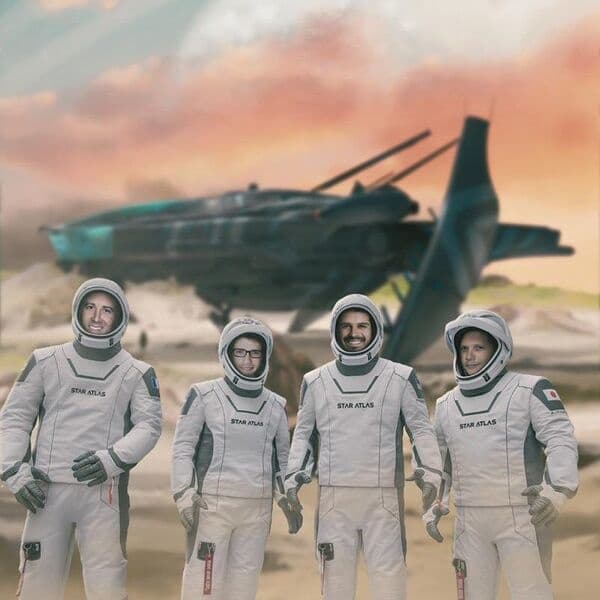
Despite all the staged drive, the four are of course not working alone on Star Atlas, but have gathered a large, experienced team around them and also hired three outsourcing studios. These include Sperasoft, a long-established studio in Silicon Valley that has worked on games such as Halo: Infinite, Assassin’s Creed Valhalla and Rainbow Six: Siege in all areas of development in the past.
So it’s all hustle and no bustle, as is clear from the (Team page of the official homepage). By the way, it has a hypermodern design and some spectacular effects – probably the work of Jacob Floyd’s team, who wants to put the website in the foreground as a flagship for Star Atlas and thus play in a completely different league compared (to many other industry homepages). Star Atlas wants to present itself as a professional gaming project with state-of-the-art technology – and at least as far as the external presentation is concerned, it works well.
Star Atlas: omnipotence fantasy kisses space capitalism
Surprisingly, however, the email address we discover in the contact line on this so-modern website initially spits out an error message. Our interview request lands unopened back in our inbox.
After searching in the depths of a press kit, we finally discover a second email address, which this time leads directly to the office of the PR boss of Star Atlas. And without further ado, he arranges an interview with Michael Wagner, one of the reasons for the development team, to whom we can ask our many questions. But first we take a look at how Star Atlas works exactly.
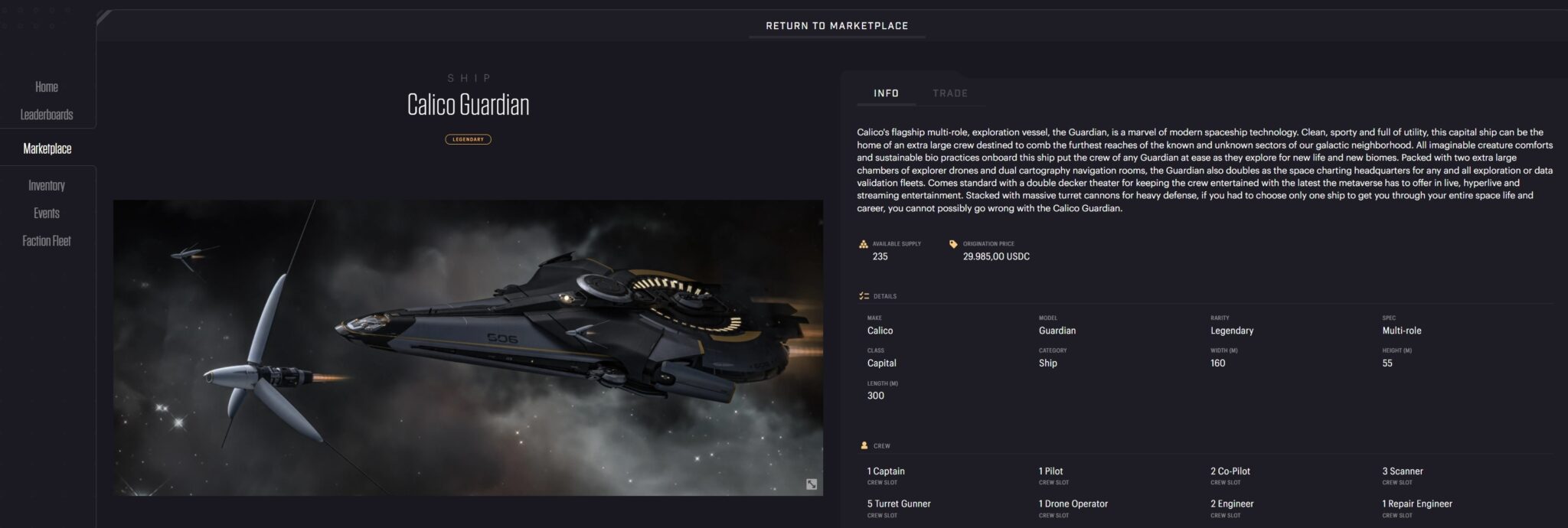
The visual similarity to the space adventure Star Citizen, which is obvious, continues with the gameplay: (Players buy spaceships), mine resources, trade with other players, establish trade routes and fight each other in space battles – a gigantic sandbox game without prescribed goals and with maximum playful freedom.
Although developer Automata calls Star Atlas a strategy game, you are supposed to be able to go inside spaceships and stations from a first-person perspective. A first video with supposed gameplay shows the vision behind it:
Framed around this core gameplay is a classic sci-fi narrative that can be summarised something like this: In the year 2620, three factions struggle for influence, power and wealth. Humans control the MUD territory, an alliance of exotic aliens rule the ONI region and autonomous androids administer the Ustur sector.
Players can join one of these factions and either spend their lives (and game time) as traders always flying under the radar, found their own clans – or seek political influence.
In Star Atlas, this political influence is more than just a feeling, but a tangible resource that costs money and is paid for via blockchain: The so-called Polis Tokens, one of the most interesting innovations that Star Atlas wants to introduce into the gaming world.
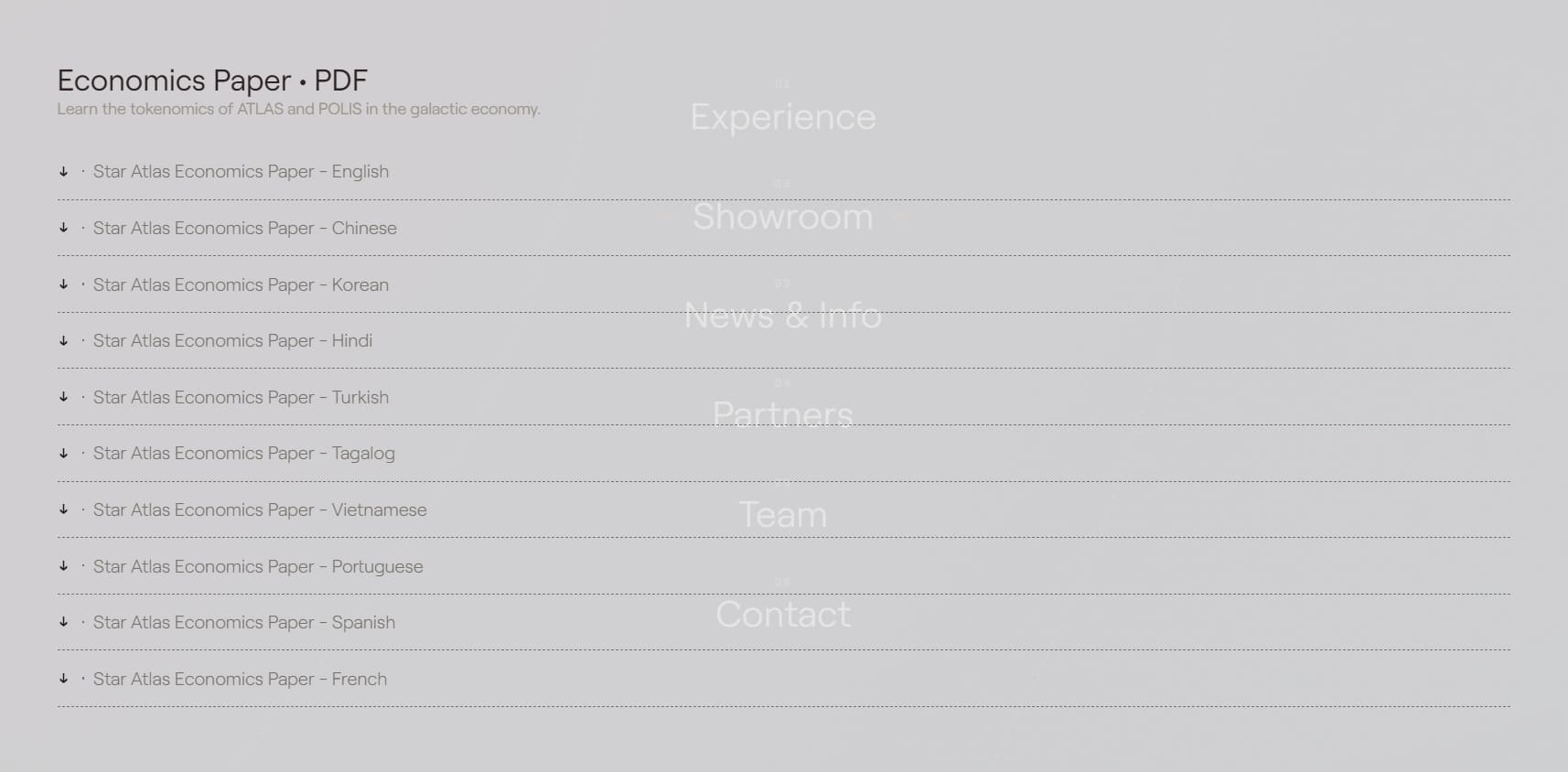
Wrestling for influence – in the game and with the development team
The term “polis” is not a neologism by Star Atlas, but refers to the idea of the ancient Greek “poleis”, i.e. city states like Athens or Sparta, which passed laws independently and autonomously, minted their own coins and maintained a military.
Independence, security, personal responsibility: these are all positive buzzwords that are closely linked to the “polis”. The development team makes sure that even players who have not studied archaeology or have a great passion for ancient history get to know these associations: In the 41-page introductory manual, the developers once again derive the meaning of the word in an easily understandable way, and then explain the two uses of the Polis tokens in more detail.
On the one hand, Polis Tokens give their owners political influence in the game: Whoever owns the most Polis Tokens in a region of the universe may pass laws, levy taxes on trade goods from other players and determine which resources may be bought and sold and to what extent.
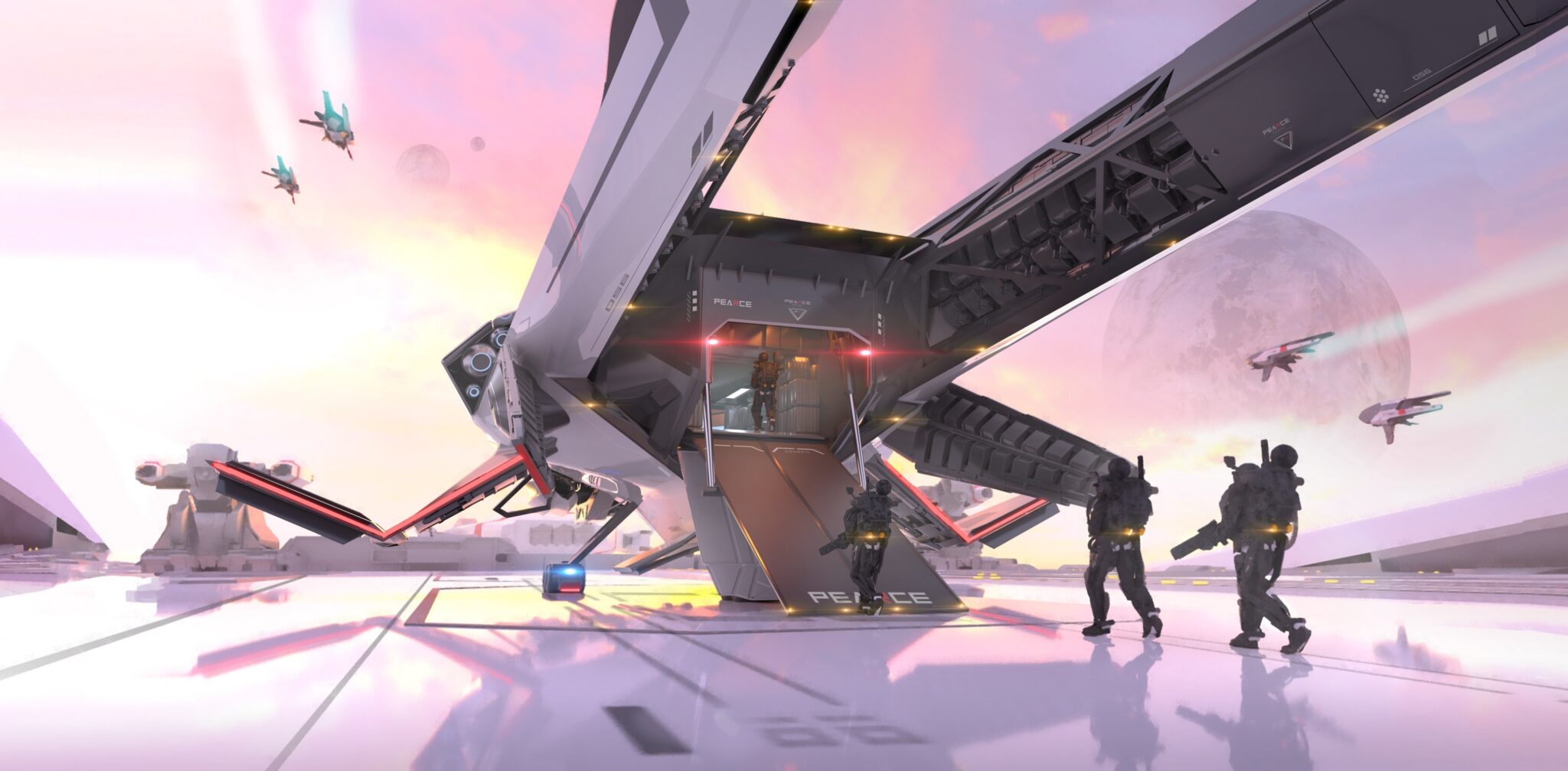
The trick: All these advantages only work according to the majority principle. This means that there is never just one “dictator”, but instead a small number of players, each holding the most tokens, act collectively and pass laws. This is to prevent arbitrary autocracy – but of course also to encourage players to continue buying tokens, even if a wealthy token owner has already taken the lead.
On the other hand, the Polis tokens grant influence on the decisions of the development team itself outside the game – at least that is the promise: Those who own the tokens can have a say in content for patches, update planning and new features. However, this will only be possible two to three years after release, until then the development team wants to continue to develop the game independently.
The concept of Polis tokens is completely new in this form: the aim is to establish a close connection between the community and the game world and the development, although the community will have to pay for this influence with real money – it is not yet known how much the tokens will cost.
Whether and how useful this resource can complement or even enrich the gameplay must be seen in the release in a few years, but one thing is already foreseeable: Due to the real price of the tokens, the players who have a larger real-money budget and want to spend it will potentially have more influence. A game world ruled by the rich – that is one of the most likely scenarios Star Atlas is heading towards.
Anticipation of the Metaverse
In an interview with GlobalESportNews, Michael Wagner, one of the four founders of the company, takes pains to present his game Star Atlas as a project with gigantic potential: Again and again he speaks of “opportunities”, “possibilities”, “the future” and conjures up romanticised notions of the Age of Discovery. These buzzwords also frame his answer to our question as to why Star Atlas will finance itself via the blockchain and offer both NFT spaceships and tokens for sale and purchase, instead of using classic monetisation models:
“We are building a completely decentralised future of the Metaverse that will live and constantly evolve, and the only way to do that is to rely on the blockchain. The gameplay of the game may look very different in ten years than it does today.”
Yes, Star Atlas is intended to be a long-term project, with an enthusiastic fanbase not only playing – but also making money themselves. According to Wagner, this play-to-earn concept will also only be possible thanks to blockchain technology: players can earn their own tokens through traded NFT spaceships and mined resources, which have a real real-money value.
This sounds interesting at least, but also like distant dreams of the future, because so far there is only the idea, a spaceship shop and hundreds of manual pages on Star Atlas – but no real game yet. Nevertheless, anticipation should be aroused.
The Star Atlas team keeps in touch with its fans via Discord (over 160,000 members), Telegram (over 45,000 members), Twitter (over 300,000 followers) and YouTube (over 29,000 subscribers). According to Wagner, more than 80,000 people have already chosen a faction through the website and registered with a wallet account – the prerequisite for purchasing spaceships in the NFT shop.
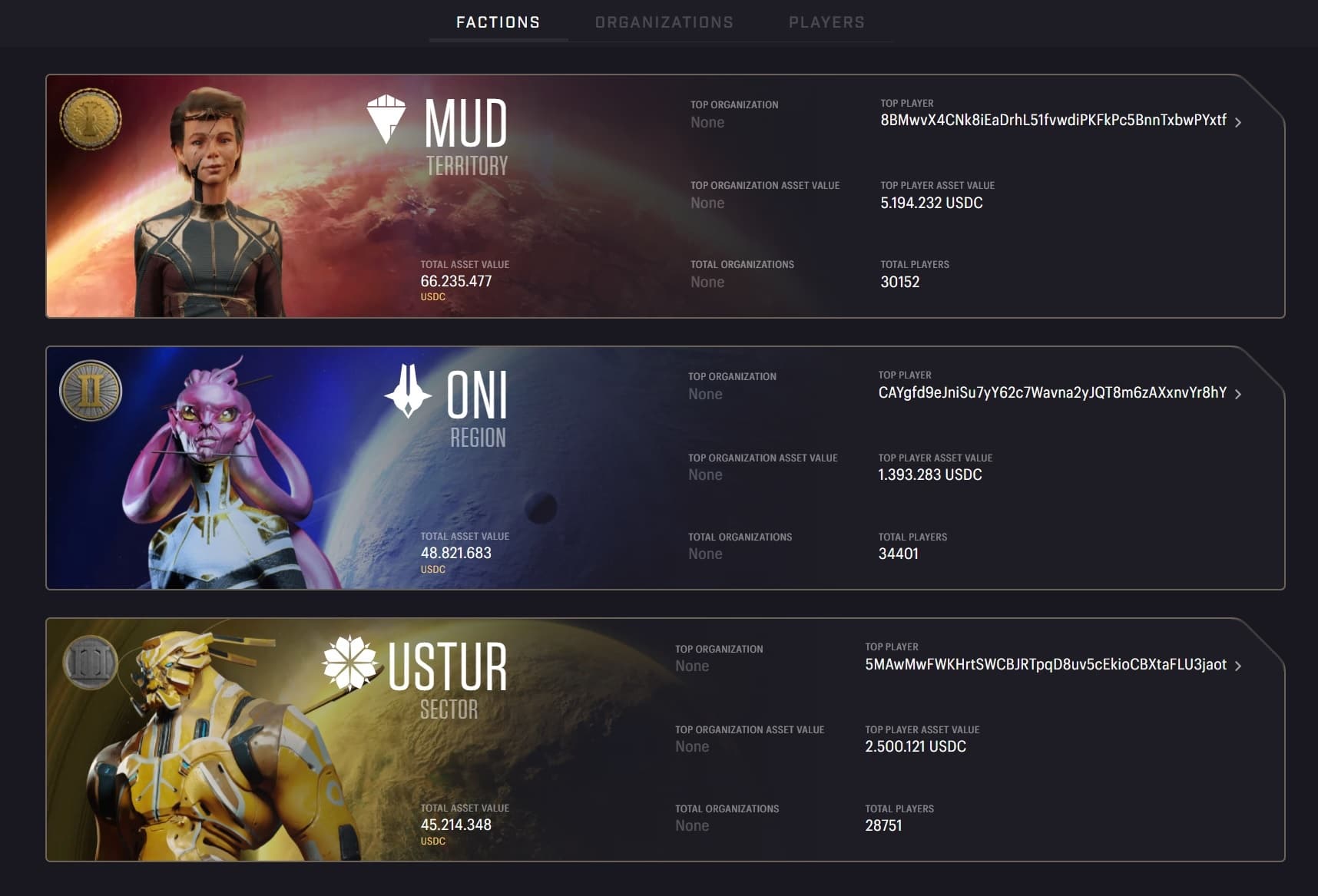
However, Wagner does not reveal how much turnover has actually been achieved so far. So it’s impossible to say for sure how financially successful the first months of the game announced for 2021 actually are. But one thing strikes us during our research: Despite the impressive follower numbers in the various social networks, the actual interaction numbers are surprisingly low.
While (the big Reveal Trailer) has been viewed almost a million times so far five months ago, the latest trailer from early March 2022 does not even reach 7,000 views. In the Star Atlas Discord, too, we read the same old nicknames: so-called heavy users or “whales” who are particularly enthusiastic about the as yet non-existent game world.
Wagner sees this as the biggest hurdle yet for Star Atlas: forming lasting interest from the initial hype a few months ago on the still new NFT wave. He explains it this way in an interview with GlobalESportNews:
“Getting everyone on our platform will be a big challenge. We clearly see the trend towards metaverse gaming, but until everyone, not just the crypto community, jumps on this bandwagon, it will take time.”
But Wagner says that is essential to the vision of Star Atlas, which he says will one day be played by “the entire population”. To that end, he said, the public still needs to be “further educated” between now and release to help them understand Star Atlas’ in-game economy, blockchain and NFT technology. “Once that further education happens, we’ll have no problem attracting new users.”

Our take on Star Atlas
The research on Star Atlas was complicated: The development team provides a total of several hundred pages full of information and technology presentations on its website, which should help interested parties understand the use of NFTs, blockchain technology and the other game concepts.
Such transparency is laudable, but the texts are so extensive and sometimes complex that they can quickly confuse and overwhelm interested parties.
After working through these manuals, looking around in the Star Atlas community and talking to Michael Wagner, we perceive the game as one thing above all: a big, insanely ambitious promise that relies on a technology that is controversial in expert circles.
It will be years before Star Atlas is really playable. Until then, the first “mini-games” and browser applications are to appear, which will gradually introduce users to the game world. Whether the players who have already invested money will have such staying power or eventually withdraw their money from the game cannot be predicted.
So Star Atlas, far before release, remains an interesting idea for the time being, but one that still has to prove itself. Obviously, the development team is professionally organised, has a lot of start-up capital and a clear vision – but all these are only the first of many steps on the way to a successful, sustainable and fair multiplayer game. Also in the world of blockchain.

